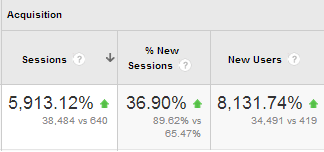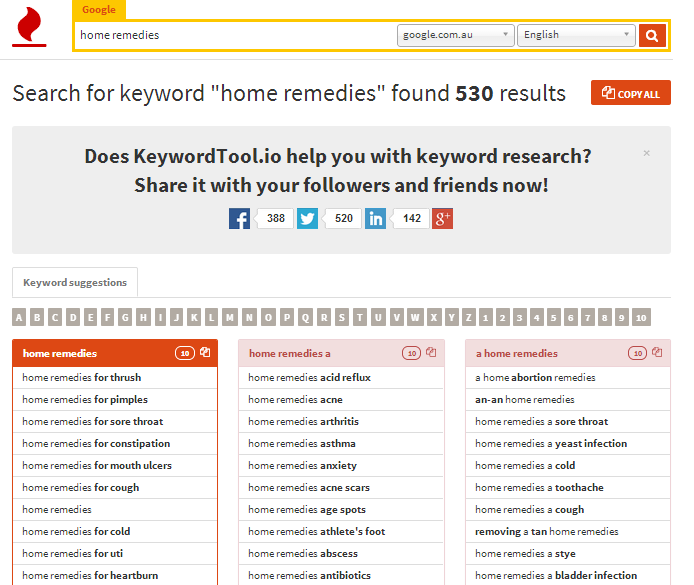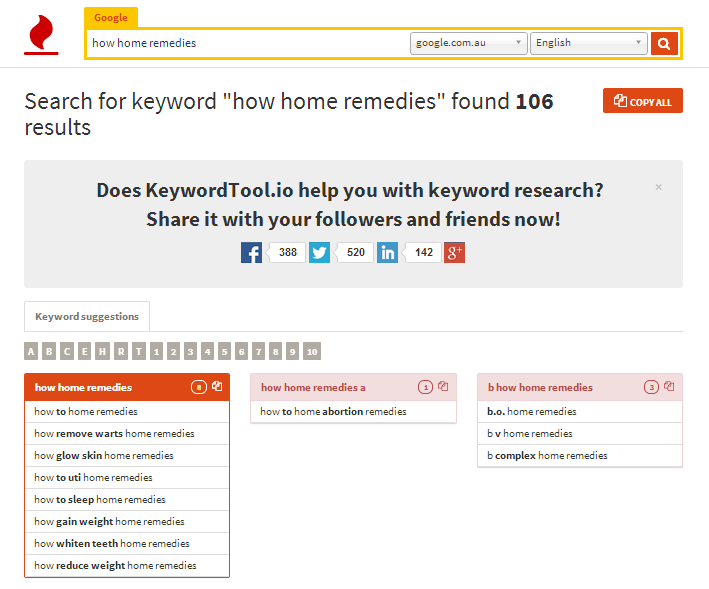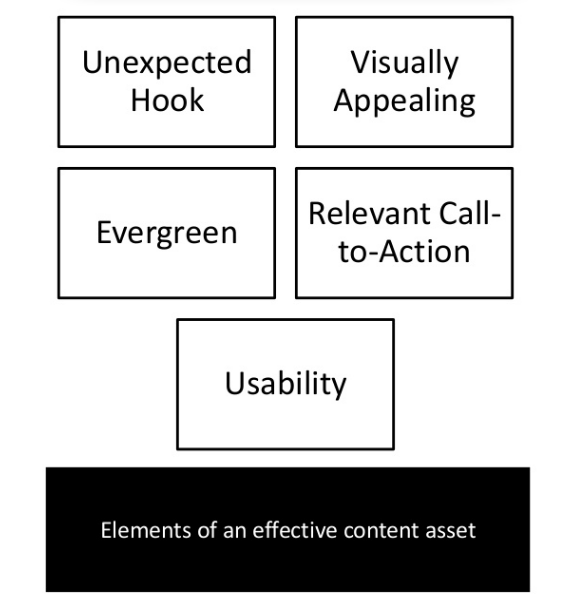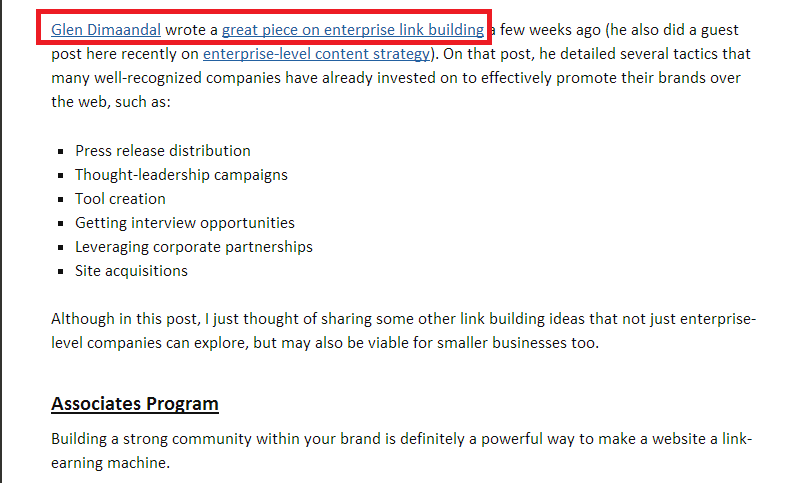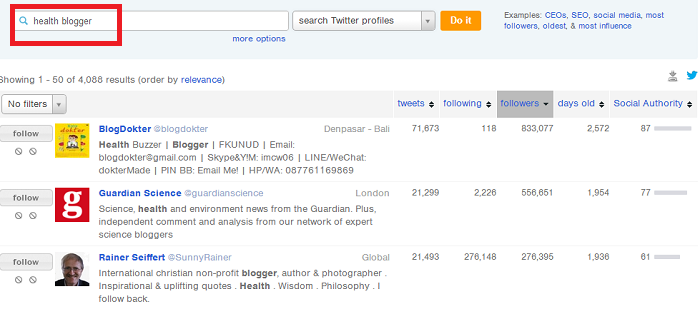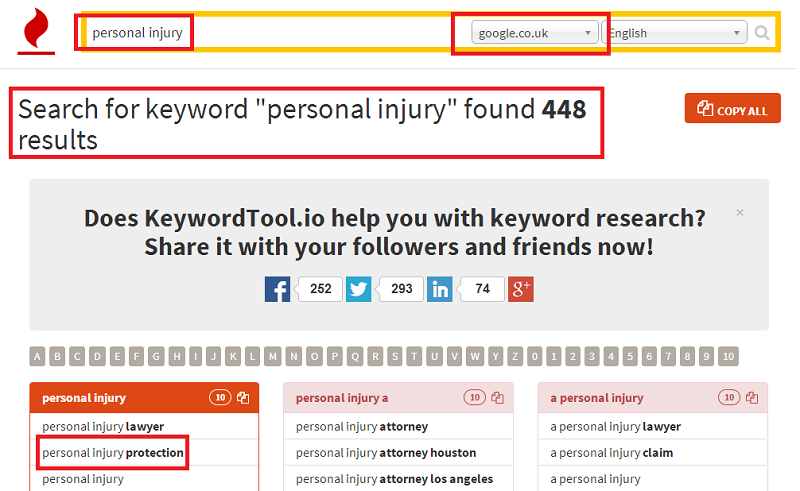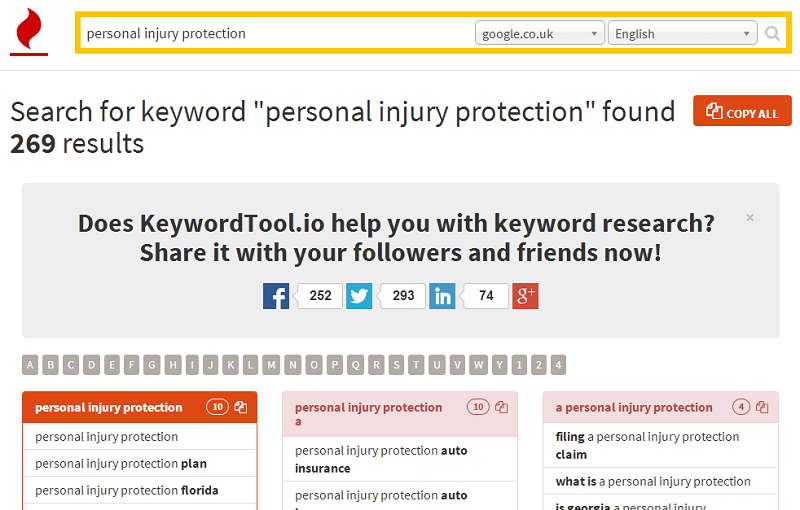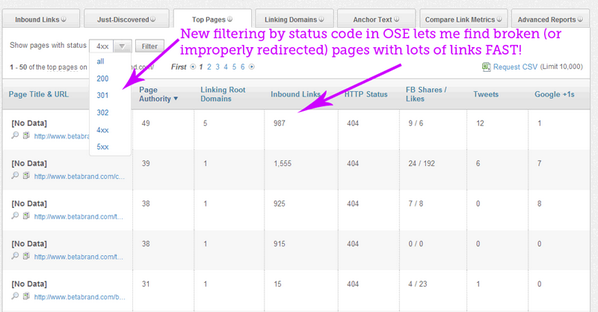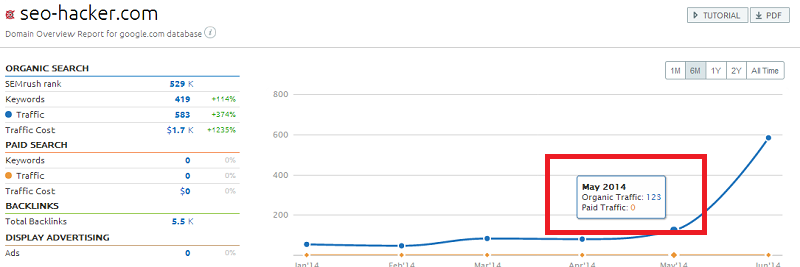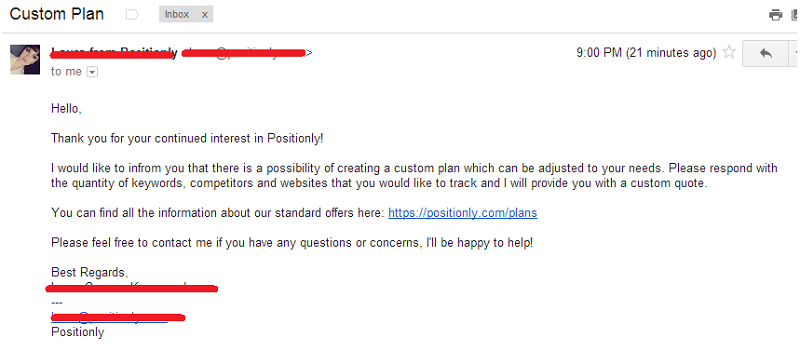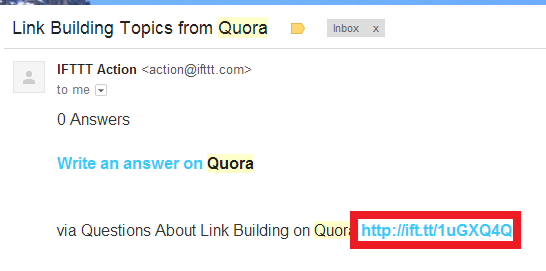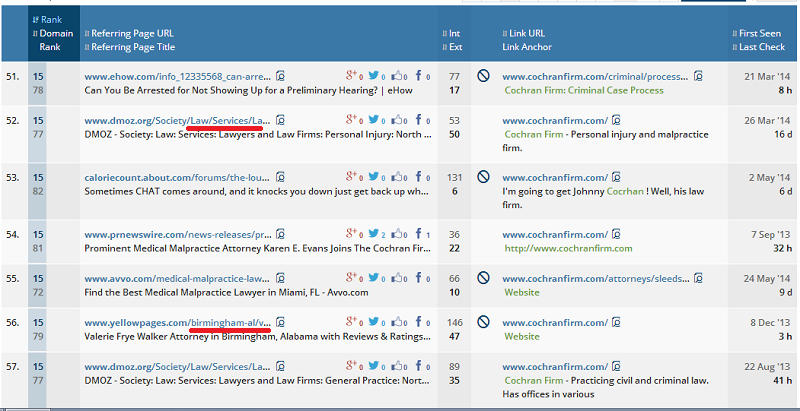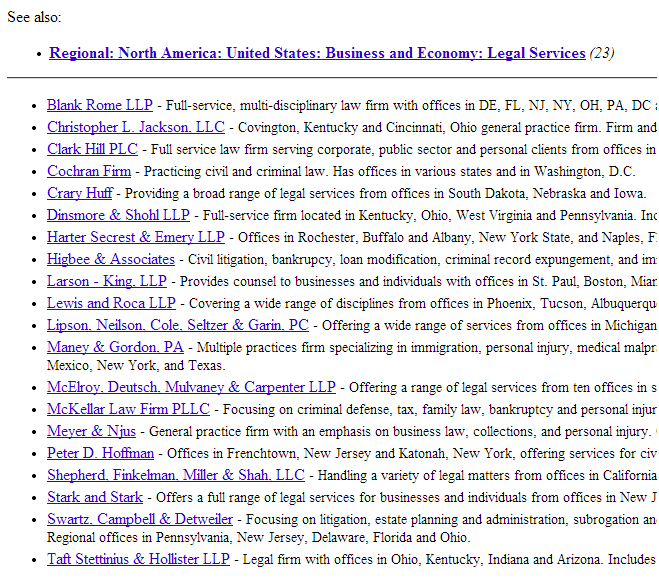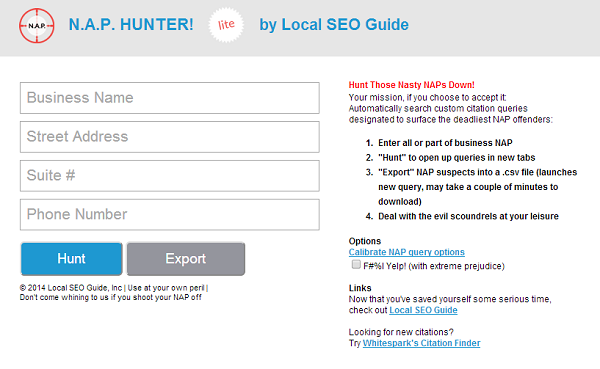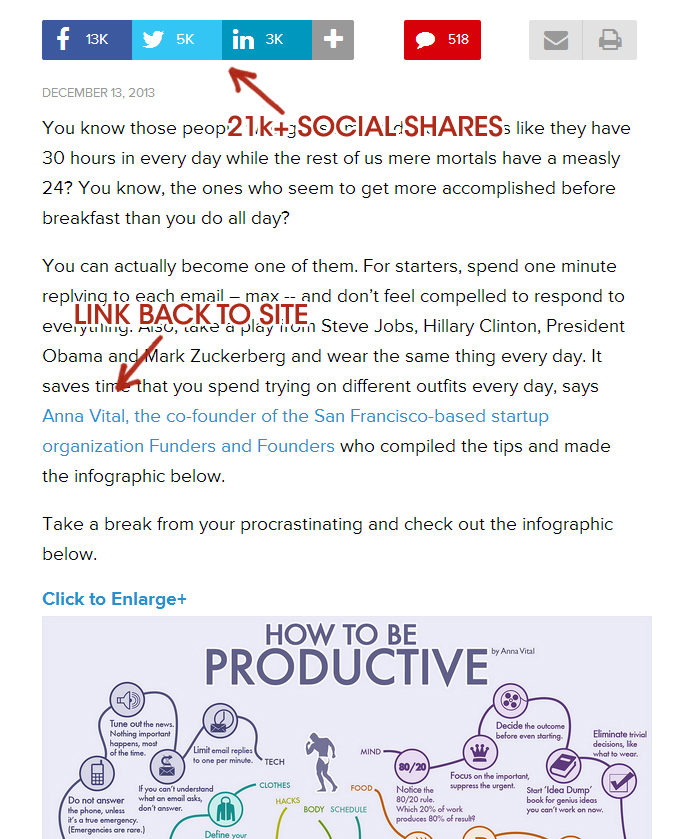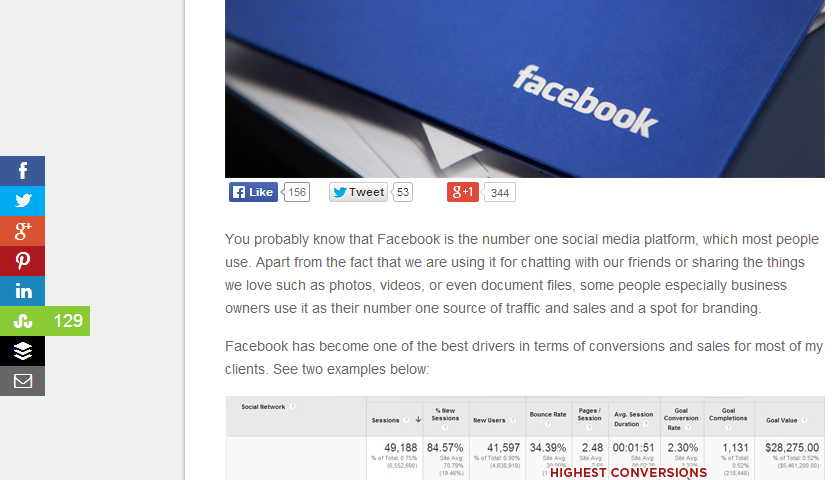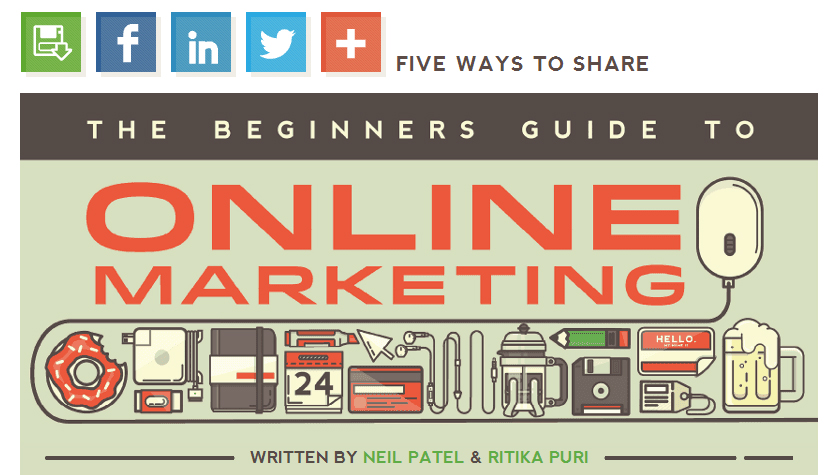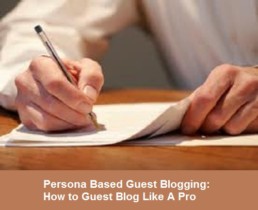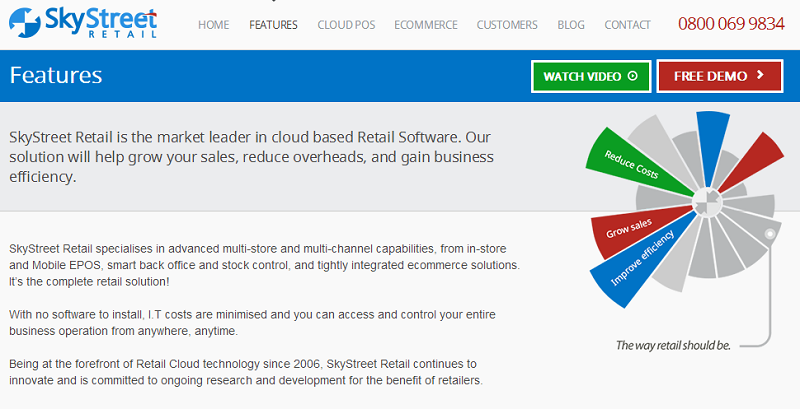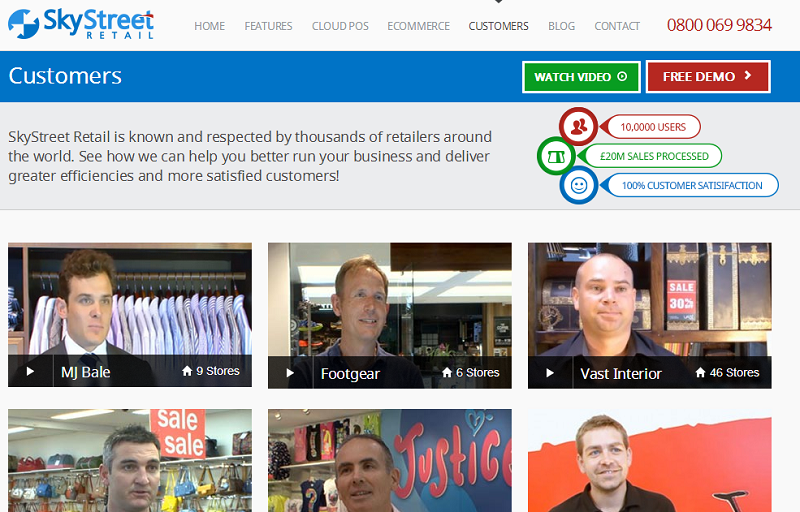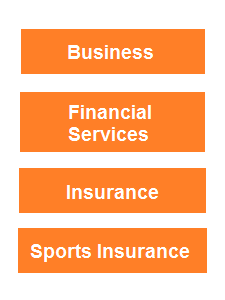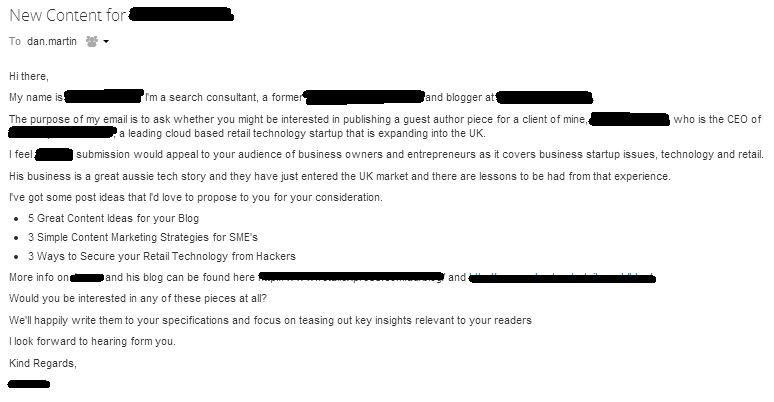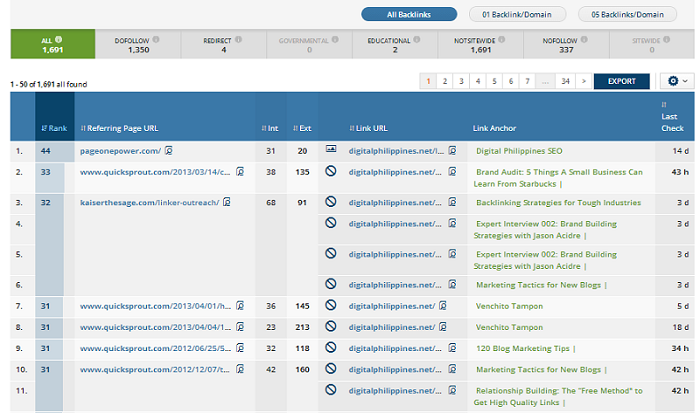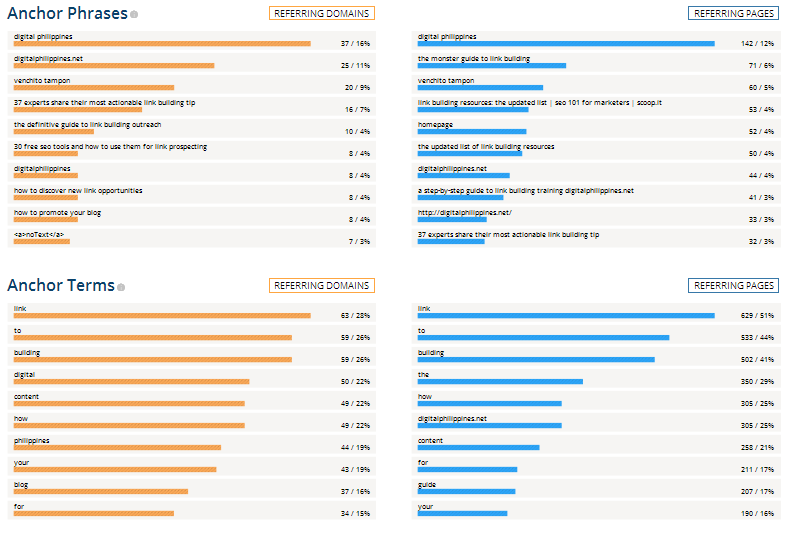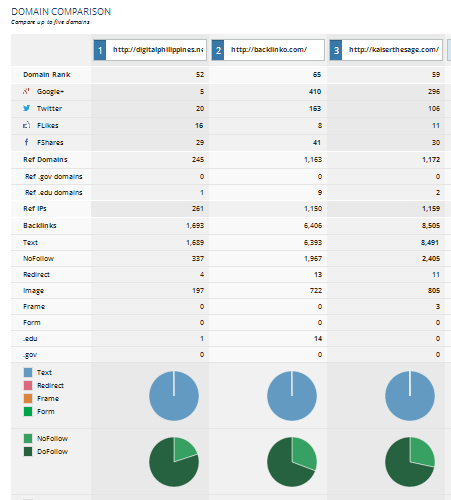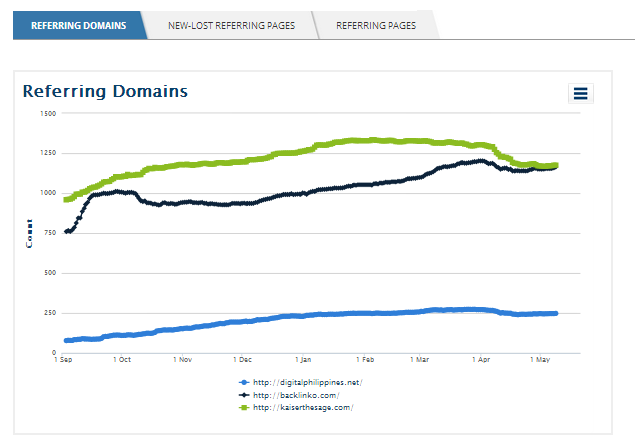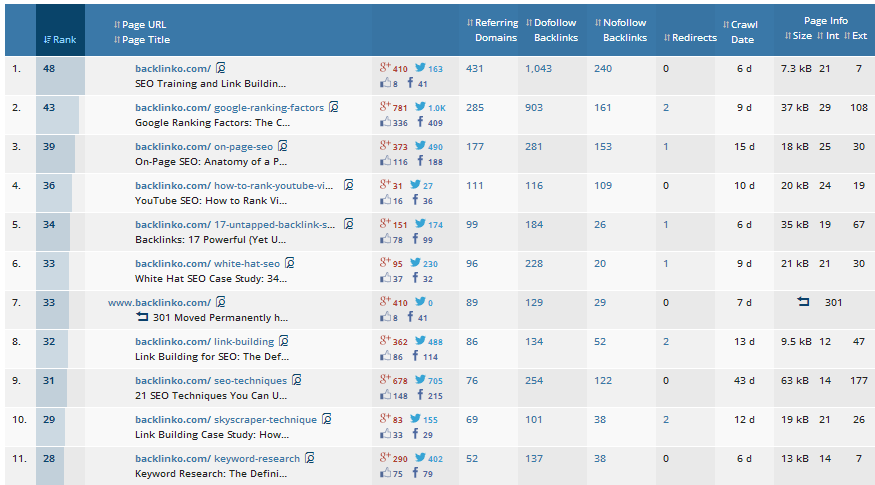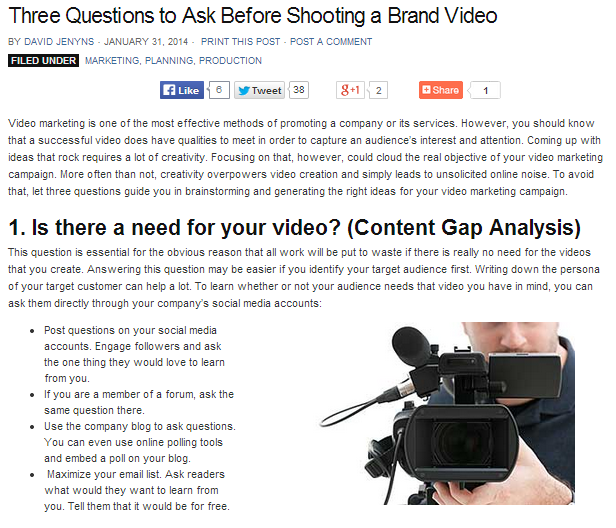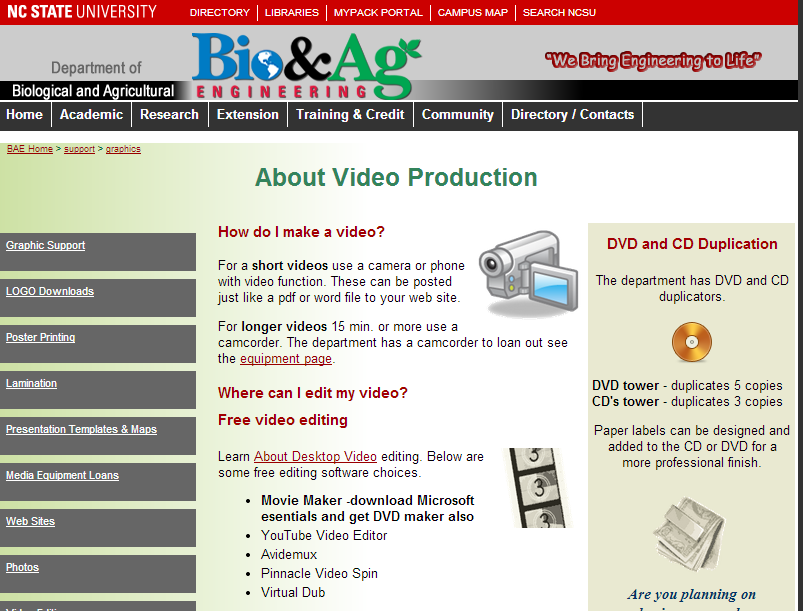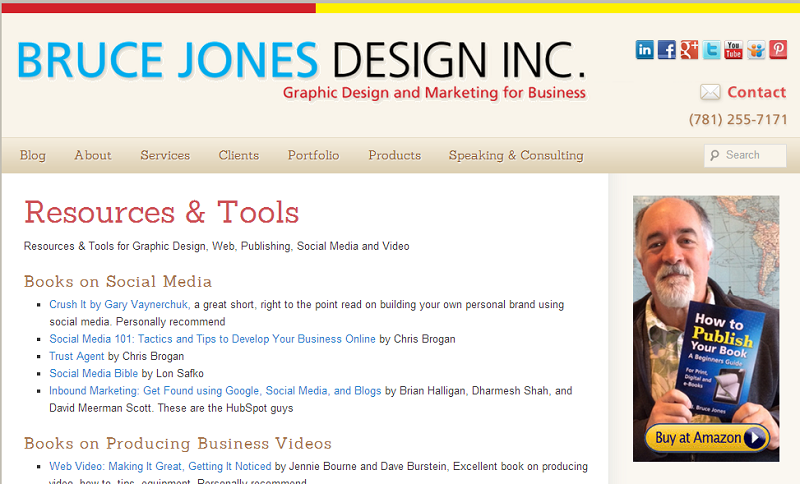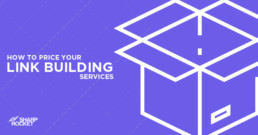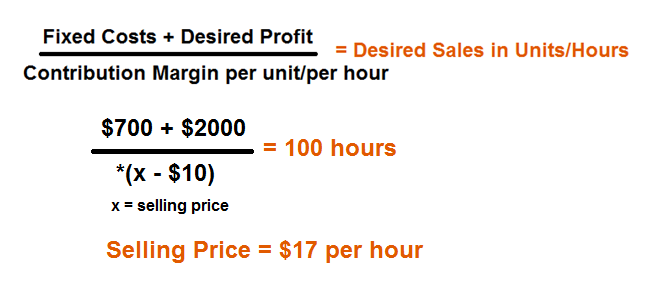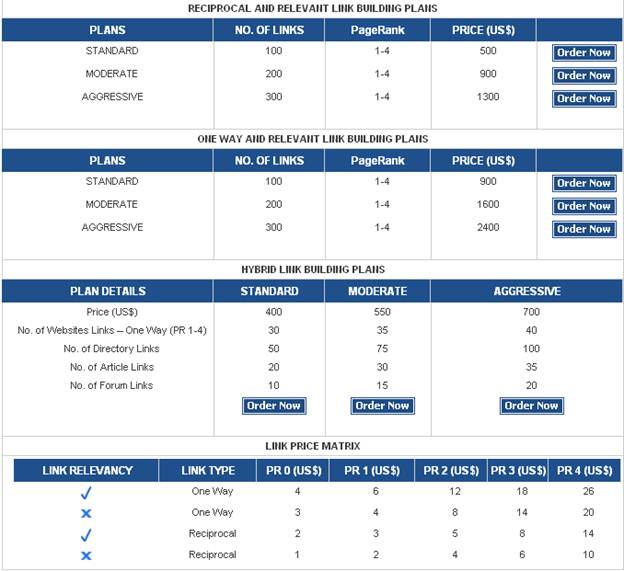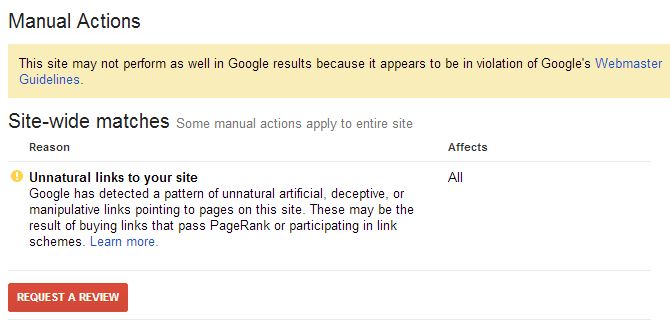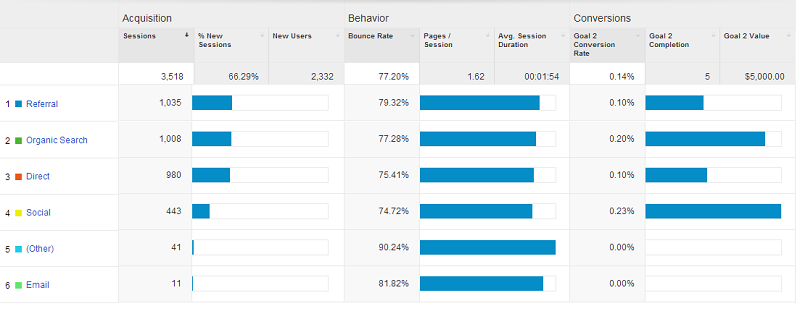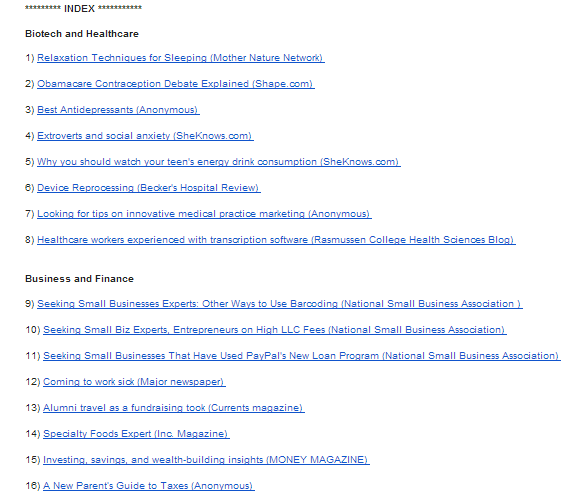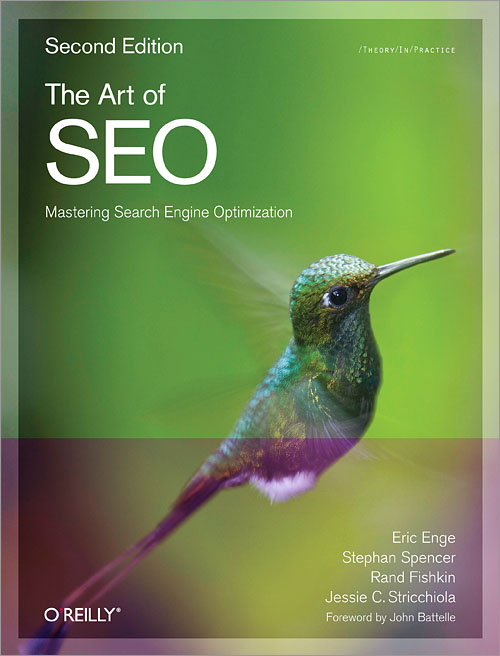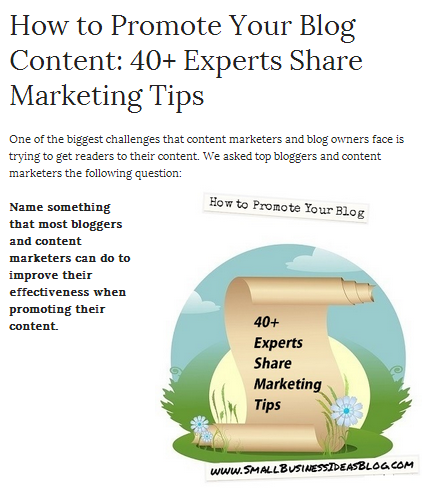How I Increase My Client’s Website Search Traffic by 5,913% and Earn $440 in 14 Days
Increasing search engine traffic for any website is one of the main goals of search marketers given that it can help speed up generating more leads/revenue/conversions to a certain brand from any space.
Similar to any marketing process, achieving search marketing goal would need specific strategy and actions to plan ahead of time and to set base metrics that will determine if the campaign reaches the goal or not.
The strategy and actions that I applied to my client’s website (which will be my case study for today) are all pretty basic what hat SEO optimization techniques. However, it gave me the following success rates after two weeks:
- 5,913% increase in search traffic
- $440 Adsense earnings
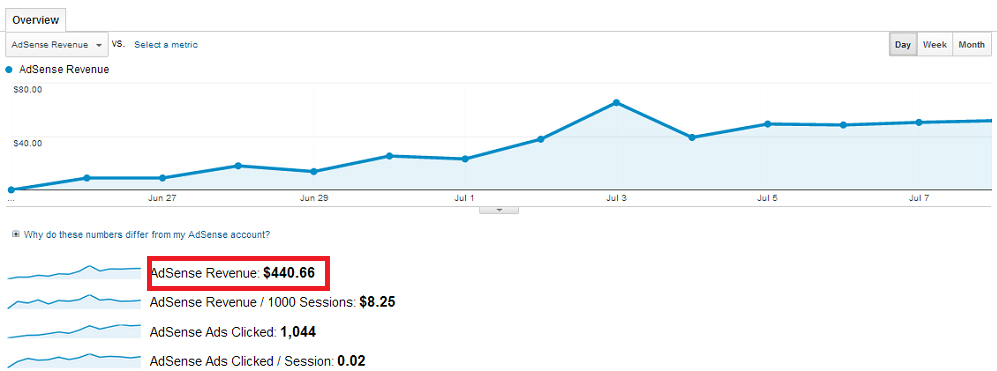
The main concept of my approach in search marketing as a whole (including off site – link building) is providing the best experience for my users. This is what search engines are looking for every website and would basically the core deciding factor of ranking a certain domain on search results.
User experience primarily points out to two things – user’s need and the specific action to satisfy it. Learning to quickly identify needs of your users could help you understand your market environment and think of ways on how to attend to those needs.
How to Increase Search Engine Traffic through Basic On Site Optimization
Analyze your industry’s search environment
My client’s website belongs to health niche, particularly in the home remedies industry which is a very competitive space.
To get started with my white hat SEO strategy, I did a competitor analysis on a few authoritative websites to see how they provide the best experience to their users through proper site architecture, content placement and user-based web design.
This gave me an idea that the type of content that people in the home remedies niche would want to read are mostly short list type of blog posts.
The main reason is obvious. People who’re looking for solutions for their health-related problems won’t spend time reading a long article on quick and effective ways to get rid of pimples. They want immediate solutions for their problems.
This led me to another idea that those who’re searching for quick home remedies would normally use long tail phrases for their searches instead of using main terms as search queries (they want to quick solutions).
The demand for these long tail keywords is extremely high and some of them tend to be low in competition which are good topic ideas to target for content generation.

This simple competitor analysis helped me get a better feel of my client’s website status in its industry’s competition.
Find the searchers’ intent to match with your categories
Categories are foundational pages of a domain that allow visitors to walk through each webpage of the site and help them complete their desired actions (as to the main reason why they visit the website).
Optimizing categories based on how the searchers should flow through each page of your website could give your audience satisfaction.
For my client’s website, I created a spreadsheet to list down categories that best suit the searchers’ behavior.
I only asked myself a question, “how can I help my users find his/her want(s) on my site particularly when he landed on my homepage?”
This led me to a good list of categories that makes each blog post organized in a way that matches to the searchers’ behavior.
- Gender – Men/Women -
- Age – Children/Youth/Adult/Seniors
- Many more…
If you landed on the homepage of the site and you don’t have any specific home remedies in mind, you could easily check and find categories that fit to your persona (e.g. age, gender, etc..).
This kind of categorization helped my users find the exact blog post that he/she wants to read. This could also give him a reason to come back to the website again given that he was satisfied on his first search visit.
You can also do the same on your website by looking at classifications from a taxonomy that is related to your industry. Taxonomy is the practice and science (study) of classification of things or concepts, including the principles that underlie such classification.
You can use the following Dewey Decimal Classification Systems to identify industry-related categories.
Optimize your content for long tail keywords
Long tail keywords are composed of three or more words that tend to align to specific intents of the user. These phrases are easier to target for rankings particularly on blogs given that they are less competitive than head terms.
Discovering long tail phrases for keyword targeting would basically need some handy tools. You can use any of the following for keyword research:
- Google Webmaster Tools (GWT)
- Google Analytics (Real Time)
- Keyword Tool.io
- SEMRush
Google Webmaster Tools
Go to GWT – Search Traffic – Search Queries to find keywords that your visitors are using to find your site’s internal pages.
Take a look at this screenshot below.
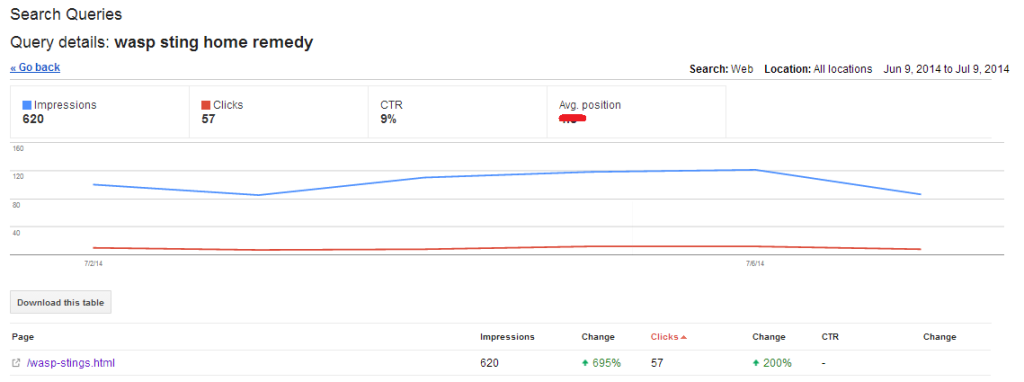
Optimizing the page with the exact search query: wasp sting home remedy (or other variations, i.e. – home remedies for wasp sting), helped the page rank for its desired long tail keyword as well as for other industry related phrases.
Google Analytics
Though Google has decided to hide the big portion of its keyword data (non-provided keywords), you can still use Google Analytics to find some long tail keywords.
By checking you’re the Real Time section of your GA account in a regular basis, you can find gold keywords that you can target for your future post/content.
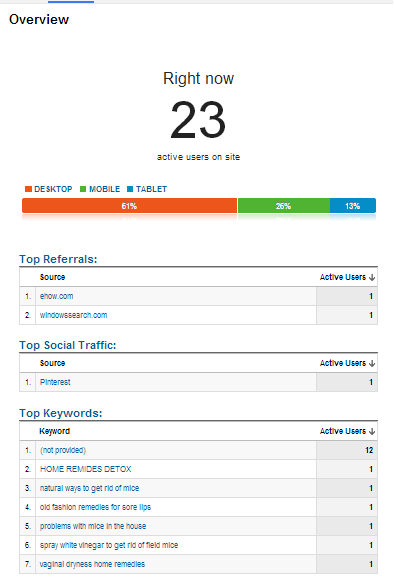
KeywordTool.io
Another tool that you can utilize for keyword research is KeywordTool.io. I already covered this tool in my post about organic link building but just a recap on how to use it, here is a short list.
- Grab your head terms and find additional keywords using the tool.
- Add when, what, why or how to your head term to find more topic ideas.
SEMRush
There are tons of ways to generate topic ideas using SEMRush and you can check out this comprehensive guide by Rishi Lakhani for a complete list of methods on how to use the tool.
If you already have a good list of keywords, you can optimize your pages by including the targeted keywords on the title page, meta keywords, header tags and first 50 words of the body copy.
Other optimization techniques:
- Link to the most important pages from your site’s other relevant pages. Go to GWT – Search Traffic – Internal Links and see if your most important pages (besides homepage) get a lot of internal links from other pages.
- Improve your site’s loading speed for positive user experience. Use tools like GTMetrix and Pingdom.
- Optimize your images by targeting keywords in their alt texts.
- Track and fix code errors through W3C Markup Validation
More Resources:
If you liked this post, you can subscribe to this blog or follow me on Twitter and Google+.
Image Source: 1
How to Earn Authority Links to Your Domain
Link building space is a fast-paced search environment. Different link building approaches and techniques had evolved to adapt to the users’ needs and behavior and are now focusing on building strong brand presence on the web, earning trust from the target audience and building connections with the right persona groups.
Authority link building is essential not only for those small brands who don’t have any established influence within their niches but also for bigger ones to get them stay ahead of the competition. Brands will benefit from getting authority links in so many ways such as:
- Increases the exposure of the brand as it would be introduced to a wider audience targeted by the link sources.
- Continuously assists conversions.
- Passes authority to the domain being linked to.
- Sends referred targeted visitors.
- Helps the brand absorb social followers/readers/brand loyalists.
These benefits could be obtained by the referred domain considering that the authority links are niche relevant and qualified based on domain metrics (DA, PA, search share, Alexa) and brand metrics (social shares, readership, community strength).
Types of authority links
There are two types of authority links: absolute and relative authority links.
Absolute authority links are backlinks from domains that generally discuss multiple subjects/niches. Those domains can easily get the trust of their audience from different market segments, seeing that they had establish themselves as authorities before on earned media outlets (newspapers, television, radio, etc..).
Relative authority links are backlinks from domains that are considered as authorities in a specific niche. These domains have high search share in their particular market segments.
Earning both types of authority links could help boost the authority and influence of your domain. However, if you’re targeting a specific market, you would want to prioritize building relative authority links as they are much more favorable of passing highly converted visitors to your website.
How to Get Authority Links to Your Domain
Produce link-bait content pieces
Link baiting has become a norm in content marketing given that it has the ability to automate link acquisition (link building machine) without the need to follow the normal blogging frequency.
Producing one link bait content in a monthly basis is a good starting point to acquire a few authority links and to slowly build the brand within the community.
You can start link bating on your own blog. Target to produce at least one content that is tailored to a specific market segment. Then just go with other market segments when you’re done establishing yourself as an authority in one particular niche.
Look at Brian Dean of Backlinko. At the start of his campaign, he published actionable link bait pieces about search engine optimization particularly in the off page sub-niche – link building. As a result, he was able to rank for popular keywords like link building, on page seo, and keyword research.
When he noticed that he was already an authority in the SEO field, he tap into other market segments like CRO and email marketing – which are parts of the big market segment he was targeting from the start, online marketing.
This linkbaiting process can also be applied to other industries by applying the following steps:
1. Look at the client’s market and see where there’s a content gap.
2. See if there’s content on their site that could be improved upon or turned into a linkable asset. That’s usually faster and easier than starting from scratch.
3. If they don’t have that, I help them create a linkable asset. I prefer infographics and ultimate guides because they’re cheap and easy to share.
4. I try to get as many eyeballs on the content as possible. That means posting it on industry forums and trying to get it featured on popular newsletters (a massively underrated content promotion strategy).
5. Once the buzz has died down, I pound the pavement with an email outreach campaign.
I believe the main reason why you need to produce a link bait piece is to create a hook that people will get something new from your brand (news/insight/information) and which will give your brand an opportunity to prove its authority.
More resources:
SEO Guide to Creating Viral Linkbait and Infographics
Linkbaiting Tips with Chris Dyson
Invite authoritative guest authors
Authority in a certain niche becomes achievable when useful content assets are consistently produced on the table. These are content pieces that are driven by data/analyses and information that no one in the industry has published yet and would require experience and expertise to provide actionable, comprehensive and unexpected niche-specific advices.
Regular publishing of content that have all the elements described in the image below has been a common problem for several brands (especially for those small brands that don’t have enough resources for content generation).
Source: From Zero to Hero by @kaiserthesage
To solve the inconsistency of publishing regular posts for my blog, I invited a few authors to produce new and actionable link building tips and absorb new followers/subscribers/readers from my guest authors’ blogs.
This process help me earn links from UpCity and Kaiserthesage pointing to the enterprise link building post by Glen Dimaandal and link earning strategies article by Roel Manarang (both of which are guest posts for my blog).
How to invite new but expert guest authors
1. Prospecting
Start with people whom you’ve built relationships with (those you met in local meetups/seminars/workshops and those who reached out to you in the past through email outreach).
You can also track new bloggers in your niche by diving to Twitter and Google searches (use the search query: “new blog” OR “new website” [industry])
You can also visit the comment sections of your favorite niche blogs and watch out for those people who actively engage on those blogs. See if they have links pointing to their own blog/site. These are the people that you can easily partner with because they’re spending time building new relationships/connections with the industry community through blog commenting.
2. Evaluation
Once you listed your prospect guest authors in a spreadsheet, you can now spend time visiting their websites. Evaluate their existing content assets based on the quality, design and information.
Different industries have different tone, style and delivery of information so you will really be the one to decide if those authors have enough expertise and experience to write comprehensive articles for your blog.
3. Pitching
When pitching for target guest authors, the core angle of your email copy should be the value that you will provide for them.
If you’re an established authority, you can use your brand’s current status as the value-added factor to your pitch. It could be one of the following elements:
- Readership size
- Social following
- Average monthly acquired links
- Site’s monthly traffic (optional)
- Online awards
- Monetary incentives
If you’re a small brand and you don’t have any incentives to offer, you can start by getting into the radars of the guest authors. Spark conversations with them on their blogs through blog commenting or performing an initial outreach campaign. You can use the email copy below:
Hello [First Name],
First I should introduce myself. My name is [Name] and I'm in charge of content management on the [Site Name] (URL)
Just wanted to say to you again that I loved your post [title] You may already know that from Twitter :)
[Complement about the post he wrote]
We aim to increase both the volume and the quality of our blog content and we're looking for awesome writers (just like yourself) to team up with us on this job.
Do you think I could tempt you into becoming a guest author for the [Site Name]? :)
What do you think? Would you be interested?
I hope I managed to spark your interest on this and I'm looking forward to hearing from you!
Best wishes,
[Your Name]
Ethical link reciprocation
Excessive link exchanges designed to cross link pages is considered as a red flag for Google.
This link building technique starts with creating a page (link to me, link to you page) that lists down all the sites that the webmaster has partnered with. A little section at the top or below the page provides instructions on how other websites could get a link from the page which is obviously through linking back to the site.
Though it has been practiced in a black hat approach, link reciprocation can be executed in an ethical manner.
Here’s how.
How to get reciprocal links ethically
Build alliances with key influencers and active participants in your industry (target those that spend time answering questions on forums, Q&A and other community discussion boards).
Include content pieces from other authors to your blog and distributed content (e.g. guest post). Let them know about the mentioned link. Chances are they will also link to you from their content assets.
Create a crowdsourced content (group interview) on your blog.
Start by listing down influencers/bloggers/evangelists that are expert, well-experienced and approachable in some ways. Think of a solid and actionable topic - this will be the main angle of your content. Then pitch those whom you want to contribute tips/insights about your chosen topic. Publish the group interview and let all the contributors know about it. Expect authority and social links from them using this content-based link building technique.
Engage content authorities on social and/or email platforms to solidify the relationships you have with them. There is a high tendency that they will reciprocate your actions through promotion partnerships and social sharing.
Team members at SEMRush are part of my core list of influencers/evangelists. By constantly helping them promote their product/content in some way, I was able to earn their trust and thus, led me to more link opportunities for my blog.
Their Twitter account is constantly promoting my content assets (whether it is a blog or a guest post). This only proves that link reciprocation works effectively when it is done in the right way.
6 White Hat Link Building Tips for 2014 and Beyond by @venchito14 - http://t.co/Nr4R4kp6O5
— SEMrush (@semrush) June 30, 2014
Buy links ethically
For brands with bigger budget/resources, link buying can be considered as part of their authority link building strategies.
However, there are handful considerations you need to consider when using monetary incentives to build links from other websites:
- Choosing and controlling anchor texts for pages/domains that link back to your site can be detrimental to your site’s link portfolio.
- Diversify your link profile by getting links from different types of pages (e.g. not only donation pages).
- Consider relevancy as your top priority in link buying. Links from irrelevant sources may not be beneficial for your site in the long run.
How to buy links ethically
- Sponsor meetups/seminars/workshops that will cater to the audience you’re targeting and will include bloggers/freelance writers as one of the participants.
- Incentivize bloggers in your niche to write reviews about your products/sites. Incentives could be in the form of commissions/affiliates, free access to premium products and direct payments.
- Organize niche-related and/or blogging contests that will result to baiting contextual links from participants and winners given that linking out may be part of the contest’s criteria).
- Donate to charities/organizations. Prioritize those commercial sites that can easily give you authority links (ones that already have donation pages designed to attract donations from different brands).
Another effective way to earn in-content links through link buying is investing on influential bloggers that actively contribute guest articles on different authority news sites/blogs.
The strategy will result to contextual links from guest posts written by an influential blogger. Those high quality authority links are pointing to either your homepage or any of your deep links (e.g. category pages).
To get started, here’s a step by step process to execute this strategy:
1. Prospecting
Look for influential bloggers that consistently write high quality guest articles on authority blogs. Use Followerwonk and Google search to find them.
Check out their Google+ profiles to see and evaluate their existing guest contributions. Normally, if they implement authorship markup (rel author) on their guest blogs, it would be listed in their Google Plus’ contributors’ section.
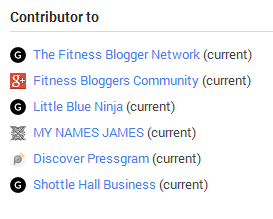

Create a spreadsheet for those prospect bloggers. Include columns for their personal websites, contact emails/forms, Google plus profiles and samples of their works (e.g. at least two guest posts).
2. Evaluation
Filter your list of prospect bloggers based on different quality metrics such as:
- Authority of domains where his guest articles have been published.
- Quality of content produced by the guest blogger (i.e. flow of information, hooks, style, format, etc..)
- Relevancy of the content he creates (targeting general or specific market segment – e.g. SEO is general; link building is specific).
- Strong social following (Twitter and Google Plus following).
These metrics could help you filter out influential bloggers that don’t fit to your A-list prospect bloggers such as those that publish re-hashed articles on their guest blogs, don’t have any strong community/connections (less than 500 social followers) and those that contribute for low quality domains (DA 20 and less).
3. Pitching
Craft your email copy using the same angle you used for the second link building strategy – inviting authoritative guest bloggers.
However there is one main difference between the two approaches – that is, paying guest posts from influential bloggers will focus more on monetary incentives.
Normally, a guest post from an influential blogger will cost from $100 - $250 depending on the goals and metrics used to quality a certain guest post or the domain where the guest post will be published.
This monetary incentive can become part of your email and could help your outreach campaign to get quick responses from your end-receivers.
If you liked this post, you can subscribe to this blog or follow me on Twitter and Google+.
Image Source: 1
Building Organic Backlinks the Right Way
Organic links are often termed as, “natural links” and are considered as votes for the site. These links are products of highly-targeted content or link bait pieces that aim to provide specific value/information to users (i.e. how-to guides).
Link baiting has long been discussed on many SEO blogs and probably because of its popularity and an easier process than creating viral content pieces. Popular link bait pieces is more than just a one-time strategy and if you’re not lucky enough, you would need a year or two see the best results using this link building strategy.
However, unlike any viral content pieces, paid advertising and big budget won’t be necessary in the first time frame of building your link bait assets. You would only need a proper execution of the process to get things done correctly and get you earn high quality organic links.
A lot of the tips that I’ll be sharing below require content assets to execute organic link building effectively.
Link seeding
If you’re doing link building for startups and newly-established blogs, this technique could land you various link opportunities that your competitors may haven’t know about.
The process starts with identifying “long tail queries” that your target audience might be using to find your products, your brand and informational content in your industry.
I personally use KeywordTool.io for this technique for the following reasons (which are also present in the tool page):
- It generates up to 750 suggestions for every keyword (which are mostly long tail queries).
- Best alternative to common keyword research tools like Google Keyword Planner.
- It's absolutely free.
To start with, you can create a list of keywords that your audience is using to find your unique selling point (service, product, blog, etc..). Then discover more topic ideas by grabbing those keywords in KeywordTool.io.
You can simply use your main keyword, e.g. “personal injury” or add words like, “when”, “how” “what” “where” to your main keyword to yield more informational-based long tail queries.
Don’t forget to select your country search when performing this in a local basis.
To populate the list, you can grab discovered phrases and do the same keyword research technique to discover more topics and search queries.
List down all the brand and industry-related keywords and search queries in a spreadsheet and choose only the informational-based keywords to look for link opportunities.
Do a Google search for each of the keyword but be careful when you do continuous search (follow tips in this post to scrape search engines without pissing them off).
Here is a list of link opportunities that can be generated using this keyword-based link strategy:
- Ranking outdated resource pages that need additional information/data/diagrams.
- Forum boards/threads that rank for long tail queries because of the continuous answers/question of members participating on those threads.
- How-to guides that need visual content to better serve the users effectively.
These link targets could give you chances of generating new links for your page/content/site. The more organic links you earn from them, the more referral traffic they can bring to your website.
Conversion link building
Links that help achieve the brand’s conversion goals are more valuable than ordinary referral links. Aside from the fact that they can generate leads/sales, most of this link type is evergreen. Evergreen links are links than tend to last and provide more value to the linking to page/site because those links are placed naturally and strategically and built with conversions intent.
For instance, you can link out to your informational pages from your content distribution pages (i.e. guest post) instead of directly using anchor texts to link to any page of your website. A good example of this is this guest post by Adam Connell at BoostBlogTraffic.
The author byline provides a link pointing to his free guide (ebook).
Linking out to information pages and conversion-captured pages (e.g. where users can stay and subscribe to your email list) could benefit your branding strategy given that you can target two birds with one stone (links and subscribers, links and followers or links and leads).
Make sure that the content you contribute on other authority blogs/sites are topics that are related to your business so that people who can see your informational link can convert into customers/followers/email subscribers.
Another organic link building technique that you can start trying is link building from pages that are highly visible on search results (targeting ready-to-buy queries or conversion-based keywords).
You can use the same keyword research tool earlier and find conversion-based keywords. Add phrase like, “where to buy” or simply add “where” to your main keyword. Identify if the resulted long tail queries can drive conversions to your brand and use them to search for more link opportunities.
Given that the searchers are ready to purchase in this phase of search, earning links from these ranking pages can continuously drive conversions to your website.
Improve your site’s linkability
Improving your site’s linkability would need proper foundation on your website given that if you’re able to fix your site’s technical issues, your tendencies of ranking for industry-related keyword is higher, which can result to more linking opportunities (when bloggers start to reference your content from their sites).
Here are a few technical and content tips to enhance your website’s linkability:
- If you removed your old pages that are still sending traffic and links to your website, you can create new pages that contain the same information as your old pages have. Then redirect old URLs to your newly-created content. Share your new pages on social networks so you’ll have tendency of earning fresh new links and shares.
- Make your most important pages visible on your homepage by including a link to your linkable assets and/or most converting pages or adding image links pointing to those pages.
- Create new resource pages that curate internal and external links (e.g. introducing a beginners’ guide to…). Then build contextual links to these pages through community discussions, guest blogs and/or link outreach to resource pages that are related to your content. You can check out this post on link building using content organization.
- Add appropriate social sharing buttons that your audience is actively using (e.g. Pinterest for photo blogs). You can also add buttons that your target audience might be using to share your content (e.g. Inbound.org share button for online marketing blogs).
Content upgrade
Every content piece from every industry requires continuous improvement or update given that there are always new information/data/analyses that need to be added to provide more value to a particular group of users.
The best way to find pages that need upgrade/update is using link building tools like Outdated Content Finder, Screaming Frog and Open Site Explorer.
OSE has its new feature where you can filter the top pages by http status. This could give you provide you more information on which links are broken but are still sending relevant traffic to the site.
Do a reverse engineer to your competitors’ websites and non-competing websites that have the same brand attributes. Grab one URL to OSE, filter the Top Pages by 4xx. Do the same to all of your competitors. Then create a list of all the broken links your competitors’ sites have.
To see if those dead pages are good opportunities to upgrade, you can use Archive.org or any tools that can bring you back to the history of those pages. Identify if the lost information of those pages is relevant to your brand and can easily be your team’s expertise.
Create a content that is comprehensive and engaging to the users, surpassing the old information found on the broken pages. Make it more interesting by investing design formats (images, slide decks, videos) to it.
Reach out to the people who linked to your competitors’ dead pages and asked if they can mention your new content in replace for the broken link. Generate more organic backlinks by including your new content on community discussions/forums, Q&A sections and social media groups.
More Resources:
Creating and Developing Content Assets Like A Pro
Strategic content distribution
Distributing your content on other related blogs (i.e. guest posts) could provide you more than one link. Here are a few tips to maximize the value of your content distributed pieces:
- Aim to provide unexpected hooks to your guest contributions given that the more people are consuming your content, the higher are the tendencies that your piece can attract more shares which will later on turn into organic links.
- Exceed the expectations of your guest blog target by providing useful information that no one in your industry has published on. This could give you an opportunity to be featured in the top contributors page which is good not only to build more internal links to your distributed content but to brand you as an author within that specific niche. You can check out this post on how to guest post strategically on other relevant blogs.
- Target content-focused websites that are authoritative in a very specific industry you’re targeting. The more closely related the site is, the better, since you can easily drive conversions from those content distributing sites.
Use SEMRush to find guest blog targets that are content authority in your industry. When they increase their rankings/search traffic after the recent Panda update, it means that they have proven their content authority in a particular niche. If you target them for content distribution, you’ll benefit more value from those sites in terms of link building, conversions, and social sharing.
Target long tail keywords in your content distribution pieces like in your slide presentations. If these pieces happen to rank for those keywords, it can generate new users to see, consume and even include your pieces from their blogs.
You can also track those followers who’ve shared your slide decks on their websites. Ask if they can also link to your website as the source of the information. You can even get higher conversion when you create a page designed for all the slide presentations, webinars and videos you’ve recorded/uploaded both on and offline.
Interaction Link Building
Building relationships with your customers/followers/brand loyalists could bring a long way to the branding of your website. It is also the easiest way to understand your audience’ needs and let them contribute insights to your content creation.
Add a quick survey on the blog section of your website, asking which topics they would want to see on your site. You can also ask questions regarding the content format, length of content and other content elements to generate more feedbacks from them.
The more targeted and useful to a specific persona group, the higher is the likelihood of earning the trust of your target audience which eventually will bring organic backlinks to your website.
Email your customers using a personalized email copy to inform them about your new product features. A simple email template with no ads, images, videos and attached are more likely to convert to new feedbacks and sales.
Email from Positionly
Create alerts from Q&A sites like Quora to get updated with timely questions that you can immediately answer in a daily/regular basis (use IFTTT).
Those questions can also be the main topics of your content, which can help you rank for several long tail keywords given that the topics might be the exact keywords users are searching for in Google.
Final Thoughts:
Organic link building considers great content to passively and actively acquire relevant and high quality links. By using the above actionable tips, you can generate fresh new content and links to your brand/site.
If you want to conduct an organic link building campaign, you can contact us for link building services quotes.
Image Credit: 1
How to Build Links Using Directories
Directory link building is one of the initial link building techniques that you can execute to add a little boost to your site’s link portfolio, to increase your relevancy signals and to get people find your brand/site on the web.
Generally, there are a lot of discussions about directories whether or not they could still add value to a website’s ranking potential and if there are any high quality directories still exist today. Let’s dig deeper into each discussion and hopefully, I could provide insights to all of these questions/boards.
Let’s get started.
Directories are still good to consider in link building for the following reasons:
- Customers still use them to find services/products within a specific city/area and if you are listed in a directory, you have chances of getting found by your target clients/customers.
- Getting links from them are easy wins in link building. If you’re working with clients, a list of 15 or 20 directory links could add some details to your weekly SEO reports (earning some trust from your client).
- Earning citations from local directories sends more signals to Google that your website is tagged or categorized to a specific niche/industry.
Now, you decide whether or not you want to continue building links using directories but the mere fact, it doesn't hurt your website at all (when done in a non-aggressive way) is a good thing to consider for your site’s backlink profile.
Quality Factors to Consider in Directory Link Building
With tons of directories out there, you have to separate the wheat from the chaffs to choose only the best directories that you want to submit your website.
Here are a few factors that I consider when qualifying a specific directory:
- Domain age – with the use of webarchive, you’ll see the year and date the directory has been bought. Though in most cases old directories had been spammed, there are still a few of them that remain high quality.
- Editorial review/discretion – you can look at the policy standard/submission pages of the directory site and see how much time they would need to review each website. If they don’t have strict editorial guidelines, they’re more likely to be automated directories.
- Lists down top brands/companies – you can grab one popular company website and search for it in the directory. See if it pops up and the category, tags and descriptions fits right to the company.
- Relevancy – Look for closely related directories that don’t have any submission from adult and gambling sites or any bad neighborhoods.
- Number of listed websites – the faster they list websites, the higher chances that they don’t have strict review guidelines (unless they existed for a long time and are ranking for many directory terms).
- Anchor texts used to link to submitted websites. If the directory links out to websites using exact match commercial keywords (e.g. personal injury firm in UK, personal injury firm in Florida), then it’s more likely deemed as a low quality one.
Types of Directories
There are three types of directories that you can find on the web. They are:
- Niche-specific. These are directories that only accept submissions from websites in the same industry/category (e.g. legal services)
- Blog. These directories would only accept blogs as part of their listings.
- Local. These directories accept submissions from sites located within the same city/country (usually with the same top-level domain – TLD).
Actionable Tips to Build Links with Directories
Reverse Engineer to Find High Quality Directories
A great way to find closely-related and quality directories is reverse engineering. For each type of directory, you can apply reverse engineering by simply grabbing the URL of a target website and discovering its inbound links using Ahrefs.
Search for one website that is ranking for a targeted keyword. You can use queries like:
- “your industry” blog (e.g. “personal injury” blog)
- “your industry” city (e.g. “personal injury” Texas)
- “your company” (e.g. “personal injury firm”)
List down all the websites in a spreadsheet and filter out low quality ones based on the metrics I mentioned above. Discover links pointing to them using Ahrefs. You can find and replace terms to quickly look for directories (i.e. using terms like directory, personal injury)
Tip: You can search for more directories by grabbing one website listed in a directory and doing a reverse engineering on that site.
Pay for Editorial Value
Maybe, you’re asking if this is considered as a paid link?
Matt Cutts answered this question. If you’re paying for editorial value in which the editor reviews the quality and relevance of a submitted website, then it’s okay to pay for the directory. However, if you’re paying for low quality and automated directories or you are given the option to choose the anchor text used to link to your site, then you should worry about submitting your website to those automated directories.
Spend a little amount of your SEO budget to these directories. Focus more on the usability, site architecture and design of your website. Invest in your content and make it useful to your audience. This investment is more beneficial than just spending money for easy directory links.
Earn citations from local directories
Citation building is known these days because of the value that it provides to a specific brand/website. Aside from getting listed in the directory and helping your customers to find you, you’re giving Google and other search engines relevancy signals that will make your website rank for local terms/keywords.
In submitting your business to local citations and directories, you have to remember that when you submit details of your brand, they should be all be the same on all directories. Be consistent with your NAP (Name, Address, Phone number) details so that Google will understand better about your website and help you rank on local search results.
You can check out this post by Richard Marriott to find more link opportunities in the local scene.
To help you save time in finding local citations and directories, I created a spreadsheet that lists down submission sites where you can add/submit your business, only for UK, US and Australia brands.
[sociallocker id="2245"] [/sociallocker]
Perform a Manual Citation Auditing
If there are changes with your NAP and other business details, you have to consider editing your past details existed in your directories. This is the most common problem most local search professionals encounter. And thanks to Andrew Shotland. He just created N.A.P. Hunter Life, a local SEO tool that will help us track our existing local citations and directories (it will be available on Google Chrome Store soon).
This tool will speed up the process of auditing your existing local citations. Manual citation auditing happens when the brand needs to add or edit N.A.P and other important details about the business.
N.A.P. Hunter Lite will automatically export NAP suspects in a spreadsheet file which will save time in gathering all the links.
Note: The tool will not keep your logins so you really have to document the username and passwords that you use for local citations/directories for you to be able to do some changes when you need so.
Reminder:
Diversify your link portfolio. Never put all your eggs in one basket. Directory link building should only be part of your initial link building strategy as you take time to plan creating linkable assets, fixing technical issues and performing link audit on your website.
If you liked this post, you can subscribe to this blog or follow me on Twitter and Google+.
Image Source: 1
11 Link Earning Strategies to Spice Your Content Marketing
This is a guest entry by Roel Manarang, the founder and CEO of North Social Media, a Philippine-based social media marketing company. He is also the author of Shoot Forth, an Internet marketing strategy blog. You may follow him on Twitter.
Link earning has been a core factor to a successful content marketing and is an effective way to increase search engine rankings on a long term basis. Many content marketers will totally agree that creating exceptional and useful content can help you earn links. Surely, best content marketing practices do earn links.
Producing top-notch content can help other publishers recognize it and generate links, which increases your site's ranking signals. However, it requires that the content should be easy to understand and consume by the users so that it can be distributed appropriately to other interested audience.
This article will help you create specific, exceptional, and useful content assets that can easily help you earn links to your site, as if they’re the power enhancer steroids.
1. Infographics
Because most people love images nowadays, one of the best content pieces that publishers can create is infographics. According to AnsonAlex, publishers who use infographics grow in traffic 12% faster than those who don’t.
Let’s take a look at Anna Viral Infographics. It has been published on Entrepreneur.com and received not just a link back to her site but also generate more than 21,000 social shares.
Making your infographics useful and easy to share using embed codes can help you earn backlinks back to your website.
To get started with creating infographics, you can use Picktochart or Visual.ly.
2. Contest
Creating contest allows you to provoke your audience to share and enter yourwebsite.
People love joining contests especially if they are loyal fans or readers. This strategy is very effective on producing organic links. All you need to do is create a contest (of course with prizes and giveaways) on your website and/or on social media platform and promote it. The more people see and share your promotion, the more links it produces.
Here’s one example of a contest that Spielgaben, which is one of my clients, has done.
We used Rafflecopter to create and launch their giveaway promotions. This increased their referring trafic and links and improved their branding campaign and conversions.
3. Social Sharing
Since social signals impact search engine rankings, it is just important to have links from social networking sites. Integrating social sharing buttons on your website allows your audience to easily share your content which later, can produce links.
Here are some of the social media plug-ins for WordPress that I personally use:
- For Post and Pages
o AddThis (free/upgradable)
o Digg Digg (free/upgradable)
o Social Deux (paid)
- For Images
o WP Easy Social Hover (paid)
In case you are not convinced on using social sharing buttons for gathering links, you may want to consider some social media marketing statistics that provide you more than just one benefit (links).
4. Researches, White Papers, and Analyses
A result-driven marketing blog like I have that produces evidence-based content pieces links out to a lot of statistics, academic researches, case studies, and analyses. This makes my articles deserved to be linked to from other blogs.
When you linked to data-driven pieces (pdfs, reports, statistics), it provides you great benefits such as an additional credibility to your posts. It also supports your personal insights about the topic.
5. Free Resources and Guides
Almost everyone loves free resources as long as they are answers to one’s needs. Depending on what type of resources you want to produce, the difficulty on creating this type of content ranges from easy to difficult level.
A few great examples to look at are Quicksprout and Heidi Cohen’s resource pages, which have different approaches on how they create their layout depending on their goals and styles. Huge thumbs-up to their sharing buttons that makes sharing easy.
6. Tools
Smart marketers love to recommend a tool that they use especially if they think that it will be helpful to their audience and get them to take action.
Take a look at Google Analytics and Yoast SEO Plugin for WordPress. Since these tools are very helpful to their target industry and many of their audience leverage from them, most of their users link back to their product pages and/or recommend them to their networks. You can check out this list of SEO tools by Linkio.
7. Quizzes
Creating quizzes helps you drive social traffic and earn links easily. Using tools such as Qzzr provides you even better feature such as capturing leads and more.
BuzzFeed, Kissmetrics, and Moz, just to name a few, use quizzes not only to earn links from either social media or websites but also to engage and increase branding awareness.
8. Memes
Memes are easy to create images that have a lot of viral potential. Creating memes has become one of the fastest growing trends years ago, which many companies still use today.
They are great for inbound marketing to create easy wins, to generate content that their users will love, and to build their brand and engagement. Fact is website like 9Gag that has become popular in earning links, social shares, and engagements simply by just producing memes.
There are free online tools like Canva, Meme Generator and Quickmeme that allow you to create meme in just a few seconds even without designing knowledge. But when you have a knowledge of using advanced tools like Adobe Photoshop, it can help you create more customized memes for your content marketing.
9. Quotes
Thought leaders who offer quotes and insights about a certain topic enchances their personal branding and enable them to earn links for their websites from those who featured their quotes. The best way to easily share quotes is by embedding them or by putting an easy share button.
An example is Noah Kagan’s best quote page, which features an embed code with a link back to his site.
10. Controversial Post
Remember those controversial articles that you shared, linked to, and provided some insights because you just can’t resist it? This type of post promotes critical thinking, education, and information.
Controversial post can fall into different categories such as education, politics, religion, health, money, and more.
If you want to publish controversial posts, you should be careful though and try not to annoy or offend your loyal readers.
11. E-books
An e-book is a great tool not just to promote your website but also to build authority or influence in your community. It is a powerful tool that naturally attracts discussion and reviews about your website/brand.
Ranking your e-book and getting a lot of exposure is a sure way to earn links and increase your sales. Another good thing is that bloggers can contact you for interviews which can result to new relationships and links.
Conclusion
Link earning surely is easier to be said than to be done. It is way harder than building links for your audience.
You need to consider that earning links are not limited to just creating exceptional and useful content. Relationship building and partnerships are just few of the other things that you can do.
Do you have strategies that are not on this list, that you use for your content marketing efforts and help you earn links? Feel free to comment below or let me know on Twitter.
Image Source: 1
If you liked this post, you can subscribe to this blog and follow Roel on Shoot Forth.
Persona-Based Guest Blogging: How to Guest Blog Like a Pro
Aside from being the most common link building tactic (as stated in the last year’s link building survey on Moz), guest blogging serves as a traffic generator that continually brings targeted visitors to a certain website which can help the brand grow a small but engaging community.
The main key to generate targeted traffic, leads and sales through guest blogging is the use of personas. With persona in mind, third-party content (guest posts) are more appealing to its audience given that the value/information provided by the content appeals to the deepest needs and/or pains of a specific group of people.
In this post, I’ll be discussing how to create and use personas in guest blogging to maximize every effort and time devoted to writing and distributing the content.
How to Create a Persona
In user-centered design and marketing, personas are fictional characters created to represent the different user types that might use a site, brand, or product in a similar way. This is essential in capturing attention from a specific group of people given that the interest, need and/or pain is identified, solved or attended by the content piece.
The first initiative in creating a persona is to identify the audience that the business wants to engage with. This may be the direct customers and/or those people that would help promote the business online.
To identify the direct customers/clients, you could simply get an idea from the unique selling point or features of your product/service. So for instance, if you’re selling an online point of sale (POS) system, your direct customers could be product retailers and ecommerce site owners.
Features
Customers
To identify your brand evangelists, you can look at those people who’ve shared your content in the past or if you’re new in the business, you can reverse engineer on your competitors’ social profiles. See the descriptions of those social followers and determine their niches.
Once you have identified your target audience (whether it is your direct customers or brand evangelists), you can now create a persona by adding important details such as:
- Name
- Age
- Location
- Job Title
- Interest
- Needs
You can create a cartoon to get a visual look of your persona.

How to Guest Blog like A Pro
Prospecting
Like any other link building techniques, guest blogging starts with the right link prospecting.
When prospecting for blog targets, you only want to find relevant blogs (where your audience is engaging) and have high potentials of bringing to your site a consistent traffic once you landed guest posts on them.
In terms of relevancy, there are three prospecting categories that I usually follow in guest blogging: horizontal, vertical and local-centric. These categories are based on relevancy and geographic locations.
Here are three diagrams to explain each category:
(Let’s take sports insurance as our niche example).
Horizontal Category
Vertical Category
Local Centric


- Use author footprints to discover guest contributions written by an industry blogger. If the blogger is highly influential, chances are those guest blogs where he had contributed his posts have strong readerships and solid blog communities. You can try using Buzzsumo to find guest articles of an influential blogger.
- Maximize the power of directories by using it to search for high quality blogs from horizontal and vertical categories of your industry. Blogs listed in directories like Dmoz are said to be of high quality given that those kinds of directorieshave strict guidelines in listing websites.
- Utilize contributor queries in prospecting for guest blogs instead of using generic search queries such as inurl:submit a post [industry] or “write for us” [industry]. Here are a few queries that you can add to your prospecting query list:
“become a contributor” [industry]
inurl:contributors [industry]
To discover more guest blogging opportunities using free tools, you can check out this post on Raventools.
Qualification
Qualifying your list of blog targets could help you save time for outreach, remove irrelevant and low quality blogs and prioritize targets based on available quality indicators.
There are several metrics in link qualification but a few of them is enough to determine the site’s authority, readership size and search potential. Remember that relevancy isn’t a quality indicator here given that it has already been applied to the prospecting phase.
Guest blog quality indicators:
- Domain authority – use Mozbar to identify the site’s DA.
- Engagement – see the comment section (an average of 5 comments is a green signal).
- Social shares – 100+ authentic social shares could further promote your guest post to a wider audience.
- Readership size (optional) – There is no definite way to track the number of average readers for each blog post. However, some blogs show the number of their email subscribers on their opt-in forms which could give you an idea of the site’s readership size.
When you have separated the wheat from the chaff, it is time to list all the industry-relevant, high quality and engaging guest blogs in a spreadsheet. Fill in some important details of each blog target by adding other columns for the following:
- Blog Name – self explanatory
- Categories – add categories that best describe the niche of your target audience
- Sample Blog Post (1) – relevant guest contributions of other bloggers
- Sample Blog Post (2)
- Topic Suggestion (1) - provide three topic ideas and let the content manager choose one.
- Topic Suggestion (2)
- Topic Suggestion (3)
- Name – find the name of the content manager/blog manager/editor
- Position - his/her position
- Email address – read these several posts about finding email addresses.
- Twitter profile (optional) – either of the brand or of the person who handles the content.
- Regular Contribution (Yes/No) – if the content manager allows you to become a regular contributor of their blog, then write “yes” in the column. Otherwise, you write “no” which means that you can only write one-time post on their blog.
- Relationship Stage – This column allows you to track the stages of your guest blogging pitches. Stages are Initial Contact, Draft, Submitted, Published.
Complete all the important details listed above and start performing your initial outreach.
Initial Outreach
The primary goal of this phase is to spark a conversation with the content manager. Once you secure a positive response from him, it would be easy for you to place a guest piece on his blog.
Write an email copy that is straightforward and that includes topic suggestions to let the content manager choose one and become the topic of your guest article for the blog.
For outreach specialists:
Hey [Name],
I know you're the [Position] at [Blog Name] and I wanted to get in touch.
I am looking to write about one of the following topics:
- [Topic Suggestion 1]
- [Topic Suggestion 2]
- [Topic Suggestion 3]
What do you think about this? If you’re interested, I am happy to get something written up and sent over to you – or if you have another topic you’d like to see covered, I am more than happy to write on that.
Here are some of my posts I've written on other blogs:
[Sample Blog Post 1]
[Sample Blog Post 2]
Thanks,
[Your Name]
For agency marketers:
Tips to create a better email copy for guest blogging:
- Start your email copy with an introduction to yourself and to the brand you’re representing.
- Propose topic suggestions instead of sending the content manager a ready-made article unless the guest blogging guidelines say so. Letting him/her choose a topic idea could signify your concern to the usefulness of the guest article to their readers.
- Provide previous guest articles that are related to the blog target you’re pitching to prove the value your writings could provide for their users.
If in case the content manager didn’t respond to your email, an alternative way to pitch is through Twitter outreach. Conversations will not be continued on Twitter but rather it is only a way to let him send to you the right email address.
Hi @prontomarketing I'd like to pitch a new guest post for your blog. Which email should I send it to?
— Venchito Tampon Jr. (@venchito14) April 11, 2014
You can check out my post on building solid relationships through link building outreach.
Content Creation
Content creation seems to be complicated for some link builders given that it will require continuous experiments to be able to see better results for the whole content marketing campaign. This is quite true, but in reality, the crucial is the right targeting of your audience and writing guest articles that best suit the needs and pains of the persona.
The combination of constant practice and right execution is the key to a successful content creation.
When crafting guest posts, the following elements are highly considered:
- Preferred topic idea of the content manager
- Level of audience (beginners, intermediate, advanced)
- Type of audience (e.g. retailers, suppliers)
- Type of content (tutorial, list type, trends)
If regular contribution request is accepted, you could focus your guest articles on one specific niche to emphasize your niche expertise and to slowly build a brand around that sub-niche.
Other tips when writing guest articles:
- Surround the links pointing to your site with call-to-actions and relevant terms/keywords.
- Link to your site’s categories and related blog posts to increase the chances of getting them found by new readers.
- Combine low, medium and highly competitive keywords to come up with a powerful long tail keyword that you can target for your guest posts.
If you do that, you’ll have chances of ranking your guest posts for desired keywords.
Other Resources:
- Creating and Developing Content Assets Like A Pro
- Developing a Content Strategy like a Fortune 500 Brand
- The Definitive Guide to Guest Blogging
If you’re looking for a high quality link building service, then you can contact our team to help you create a link strategy that fits your brand and industry.
How to Increase Contextual Backlinks with Ahrefs
Ahrefs has been my first and my most favorite link building tool since I started my career in SEO particularly in link building. This largest index of live links provides opportunities for link builders like me to analyze a link portfolio, get a good understanding of the site’s current link status and making sure that it follows the guidelines set by Google.
In a nutshell, here is a list of activities where I use Ahrefs as one of my link building tools:
- Link discovery
- Link analysis
- Competitor analysis
- Content ideation
Now let me explain how I use Ahrefs to perform the above activities.
Link discovery
If you’re working on a new link building campaign, then link discovery (or reverse engineering) could get you dive into both easy and hard to replicate links as well as give you better insights on which link acquisition methods work effective in your target niche.
Ahrefs has an easy-to-understand platform that lists down the referring page URLs, number of Internal and External links, link URL, and anchor texts of all the links acquired for the site.
The filter options in the platform allow you to sort the links by All Backlinks, 01 Backlink/Domain or 05 Backlinks/Domain. This means that if you want to see only the referring domains and not all the links acquired from every single domain, you can choose the 01 Backlink/Domain or 05 Backlinks/Domain.
By skimming the whole list of URLs, you’ll see which pages of the website garner the highest number of links and what keywords/phrases people are using to link to those pages.
Link analysis
Link analysis should be performed whether or not you’ve been hit by link-based penalties. Regular audit of your site using tools like Ahrefs allows you to track your current incoming links, see which one should be immediately removed and gets rid of over optimization of anchor texts by maintaining a balance between the use of commercial and brand-related keywords in link building.
I don’t need to dig deeper into this topic. Jon Ball has already written a beginners guide to conduct a backlink analysis.
Competitor Analysis
Instead of analyzing every single website of your competitors using the Ahrefs dashboard, why not try the Domain Comparison tool?
A quick glance of link profiles of your main competitors can reveal several insights about their current link statuses including the number of linking .edu/.gov domains, the total number of shares of their main pages and link velocities of each site. This gives you a general overview of the strengths and weaknesses of your website as well as of your competitors.
Content ideation
When getting natural links, a content piece is always at work. Whether you execute link prospecting before you proceed to content creation or do it verse visa, you’ll realize that content marketing is always tied with link building.
When finding topic ideas for your future content assets, you can use Ahrefs as a content marketing tool. Consider the top pages of your competitors’ websites or any related sites that have managed to earn high quality backlinks, shares and trust from the community.
How to Increase Editorial Backlinks Using Ahrefs – A Short Case Study
Now let me share a short case study on how I increased the editorial backlinks of my client’s website.
It is a video production blog that has several assets that can certainly generate traffic and sales including:
- Conversion rate-optimized landing pages with embedded high quality videos that clearly explain the unique selling points of the brand.
- Testimonials from clients they’ve worked with. This adds trust to the customers and can entice them to get the company’s services.
- Visible video-focused social media profiles placed in the most important areas of the website.
- A portfolio page that lists down proofs of work, clients they’ve worked with and glimpse of their projects (behind the scenes).
You may be wondering why I need to share this with you. There is only one main point here. A well-designed website with branded and optimized content for sales and traffic can help increase the number of editorial backlinks because of two reasons:
- Your brand is well-trusted within your community (this is proven by testimonials, portfolio pages, and optimized social media profiles preferably the ones your industry is using).
- Lead generation can happen either on third party content (when the piece matches the selling point of the brand) or on your website (when landing pages are optimized for conversions).
So what we did is to utilize the available content assets to acquire editorial links for the site.
Service Listing Pages
First off, we prospect for available industry-related resource pages that don’t require linkable assets (e.g. infographic) to include the company in their lists.
Using the common search queries like inurl:links OR inurl:resources “video production” “services” in Google search and/or executing reverse engineering method using Ahrefs, we’re able to find service listing pages.
After link prospecting, we proceed to link building outreach to get contextual links for the site.
High quality guest blogging
Matching the context to the brand’s unique selling points improves the quality of the third-party content. It helps the company attract leads/potential customers from their content placements especially when the content piece is able to show the expertise of the brand in offering its service/product.
We shoot high quality guest blogs with the aim of building relationships with the webmasters and allowing us to contribute regularly on those blogs.
You can check out this post about risk management for guest blogging strategy.
.Edu link placement
For company sites that have blogs, one way to get links from .edu sites is to create a linkable asset that people in the community not just .edu webmasters would love to share and/or link to it.
Though there’s nothing new with this technique, what I want to point out is to always reverse engineer on other websites whether or not they’re directly related to your business before diving into your keyword research process. The main reason is that you want to get first an understanding of what topic and content type resonated with your target audience based on the existing content assets of influencers and competitors in your niche. Then just go over to your favorite keyword research to discover and identify which keywords/phrases have high search volume potentials.
Related industry resource pages
To acquire more contextual backlinks, we move away from targeting video production resource pages. We tap into other broader industries like marketing blogs and related industries like graphic design websites.
The key is to stick into relevancy. As long as the resource page is relevant to your asset and you have a chance to acquire a link (i.e. there is a similar content that you have that is listed on the page), you can obtain a link from that page.
Summary
I was not paid to review this product. I simply love this tool and I know that newbies in the search industry would love to include it in their link building toolset.
For more link building tool reviews, you can subscribe to this blog (use the subscription box below) and follow me on Twitter and Google+.
How to Automate Link Building (Group Interview)
Natural links are products of any online marketing efforts that can bring positive sentiments about a brand being endorsed in a marketing campaign.
The process to getting natural high quality backlinks may or may not involve automation, whether it is for the use of tools or to do an activity in link building.
When automating link building, it is important to really be careful with your actions. One single move can ruin your entire link building campaign. Here are a few insights from experts on why you need to be careful with automated link building and/or should stop doing it in a black hat way.
Don’t try to automate link building! If you can automate a link building tactic, people will eventually scale and abuse it, making the tactic (at best) less effective. For example, regular link requests, directory submissions and guest blogging have all been pretty much ruined by automation.
Also, if you don’t automate your tactics, you force yourself to use your creativity and only focus on the best targets. This makes it a lot harder for competitors to replicate your link building strategy.
Don’t get me wrong - there are many processes and actions that you can (and probably should) automate for yourself. We have developed and use several inhouse tools that make some parts of our link building activities easier. Evaluate which tactics work best for you and analyze if there are any processes that could be automated to save time, to help you become more efficient, or simply to make your job easier. But please don’t try to automate entire link building tactics.
Don’t automate link building.
I could talk about using BuzzStream or doing broken link building or image theft shaming outreach or inventive operator searches and they can all be effective. But my fear is that people jump to these things first and use them as the centerpiece of a strategy. That's a losing strategy.
The links you really want, the links you earn ... they aren't automated.
- AJ Kohn
---
Now, let's head over to a good list of tips to automate link building (in the white hat way) coming from the prominent SEOs/link builders in the world.
I'd recommend dedicating a portion of budget to paid social ads for the topic or piece of content you're working on building links for, and targeting it at users that are bloggers or journalists. It's easier to do this on Twitter and LinkedIn than it is on Facebook, but you can also try using certain targeting tactics like the one described at the bottom of this Social Media Today infographic. Using clever ad copy like that example may get better responses than the typical email pitches that journalists get each day.
It's not fully automated, but it's a program that you can put a little bit of time into each week or month, and might be worthwhile in industries where typical email outreach is ineffective.
When I think about automated link building, I immediately think about Penguin updates and unnatural links penalties.
Therefore, I'm going to answer a slightly different question. Instead of helping you automate link building, I'm going to help you automate the discovery of link building opportunities.
I actually mentioned the two easiest ways to identify linking opportunities in my most actionable link building tip: broken link building and link reclamation.
Broken link building is a very simple process that involves identifying pages with broken links and contacting the webmasters for those pages to suggest alternative, live resources. You can easily automate this process with tools such as Broken Link Index and Link Builder (or you can build your own).
Link Reclamation is the process of claiming links that you should already be receiving (e.g., unlinked brand mentions, broken links to your site, improperly attributed resources, etc.), and you can automate this process with a variety of different tools (e.g., Mention to monitor brand mentions, Screaming Frog to identify broken links, Image Raider to perform reverse image searches, etc.).
Aside from these popular techniques, you can also discover link building opportunities by automatically searching for specific footprints or signatures that consistently appear in link building targets. Jacob King's Scrapebox guide gives step-by-step instructions for identifying these footprints with Scrapebox. You can also find valuable footprints in these tips by Chris Dyson and Jon Cooper.
The most successful way I've automated link building has been to integrate sharing and linkable content or widgets within the product itself. Instead of trying to go out and use software or a tool to scale/automate my link building efforts I suggest that you build it within product so that your customers can link to you or share their experience through social media. For example when working with cafepress.com I suggested they create a widget that allowed customers to link back from their blog. We also incorporated the widget and share buttons within our emails when we sent the customers a receipt of their purchase and a shipping notification. Since Cafepress customers are very passionate and often times have blogs we saw thousands of links come in that were not only relevant but deep links as well.
When it comes to "Automating link building" in a white hat sense. A good way to make the process simple is by building niche specific lists of relevant partners you have a good relationship with in specific niches and have dealt with before. This way you can build out the process and work on a long term basis with a website owner to build long term branding.
For example if you work in the travel sector and you have say 10 different clients who are all producing great content you can work with your partner websites to do high quality guest posts and feature articles. You really need to build contacts over a long period of time and develop a strong relationship with them on an ongoing basis.
Even if you do not have any contacts and you are starting out it is a smart idea to get out to blogging events and meet industry specific bloggers and build relationships. A great example of a conference/ Community can be seen below for “Parent Bloggers” a popular segment, this is type of event you can make maybe 20+ contacts with bloggers in a few hours. If you cannot make it to an event pick up the phone and make some contacts that way or follow bloggers on Twitter and build a real connection.
I think many SEO’s and online marketers take the “easy way out”. They find blogs and use blog networks and do not put in the “hard work” and build real world relationships.
Matt Cutts endorses “relationship building” by his recent quote here;
“There are still many good reasons to do some guest blogging (exposure, branding, increased reach, community, etc.). Those reasons existed way before Google and they’ll continue into the future.” – Matt Cutts 2014
If you work to build ongoing relationships with a community it can be beneficial to your brand.
Overall building niche specific lists of contacts you can work with on an on-going basis is my piece of Advice to somewhat “automate” the process, but my biggest saying is “focus on quality not quantity”.
Unfortunately, I'm not really a white hat.. I prefer to call myself "grey" so I really wasn't too sure how to approach this when Venchito told me to automate link building, in terms of white hat. Then I realized I already do it on a number of my own sites that I prefer to have a "clean" link profile (compared to some of my darker arts based sites).
There's 2 sites that I'd specifically suggest to generate backlinks, almost automatically.
Method 1)
The first is Tumblr, people can share your post and if it has a link within said post, the user that shared it will also be building a link from their Tumblr profile/micro-site which is on a different sub-domain to your own Tumblr page. Therefore building multiple links from a ton of different subdomains on Tumblr, often which are niche relevant to your strategy.
Jay did an epic video tutorial on this here.
Method 2)
The other is Reddit, it's pretty simple to share content on Reddit and if it gets popular within the community it'll easily be picked up by 100s of other users and sites.
The best guide I've ever seen on using Reddit was on Social Media Examiner. It goes into detail about how you can find your audience, make content for that specific "subreddit" community and get a ton of traffic, as well as links! - Reddit links are all dofollow.
My type of automation is not responsible for actual link creation, but instead I use tools to surface up interesting opportunities. Previously I used 80legs to do the job, but eventually had a tool developed which crawls the web and looks for broken links on random websites. All broken links are then classified and presented in a report. This allows me to find interesting opportunities. If I see a high quality page linking to a broken resource I often re-create that type of content on my site and advise the linking site to correct a dead link by pointing to my resource. This is obviously done when it makes sense contextually and it's meaningful to my site to have that type of content in the first place.
I love doing and publishing research as a scalable link building tactic. When you are creating data that doesn't exist, or replaces existing outdated information, you will get links from people talking about what you've done. A really good example of this is AYTM Market Research - they publish research pertaining to current events on a daily basis on their blog. These posts are picked up and referenced by news sites and other blogs.
Of course for this to work, people have to find your content. This means you'll either need a lot of people regularly coming to your blog (direct visits), a big social following that you can promote your resource to, or you'll have to initially promote via outreach and paid social ads. Once your resource gains some traction and does well in the SERPs, this process will fuel itself as people searching for data will continue to cite you.
The most effective way to automate or scale link building is to make a piece of content that a niche target audience (that is prominent and active online and has mainstream appeal) will react to and feel the need to share. By pitching the piece to a large mainstream publication that the niche segment reads, it's possible to get mainstream press coverage and niche press coverage at the same time. Movoto is a great example of this, their Harry Potter/Hogwarts Property Estimate infographic It's has earned links from over 140 domains including big authoritative news sites like Daily Mail, Fox News and Daily Finance – and it also scored links from niche harry potter/magic/science fiction fan sites like Nerdophiles, Toy To The World and Potter Talk.
The best way to automate your link building is through making sure that you understand which parts of the link building process can be automated. It’s a habit within our industry that we want to scale and automate as many processes as possible, but the reality is that to get the best links, you need to have a personal element in there somewhere.
Automating your prospecting through tools like the Link Prospector tool from Citation Labs or brand monitoring through Mention.net/Fresh Web Explorer will help with this. Also, a lot of your data collection can be automated through some clever XPath tricks which can then filter into your wider outreach campaign.
The key is to avoid over-automation because, inevitably, quality will drop.
The days of automated link building should be dead now. Google has shown that with the introduction of Penguin, Panda and most recently, Hummingbird, Google has openly showed their cards that any unnatural link building will be penalised and penalised heavily.
What Google is trying to achieve is that websites that are engaging and relevant to visitors will be ranked higher rather than those websites that are openly trying to bend the rules and play the system will be penalised - sooner rather than later.
Don't mess about with automated link building, or even manual link building - make your website better, make both people and search engines want to visit your website and create content that people will want to link to. It's not an easy way, but it's the right way.
I don't particularly like the term "white hat" or differentiating things between white hat / black hat / pharrell's hat / whatever hat, but I do understand the context of how it's being used in this example so I'll let it slide :). When I hear "automate" I think of something that should be working when you're not. And when I hear "white hat" I'm assuming 'above the board' strategies. With that, my answer would be something that sounds simple, but is pretty excruciating and takes hard work. Build an audience & relationships. Work hard to build an audience and those relationships. Even though that's a lot of up front and consistent work, it pays off in the long run so you can become more" automated" in the sense that you're generating links when you're not necessarily trying.
Audience: Because that audience will be the ones that gives legs to your content. You can't "automate" anything if you're throwing your work into an empty room. You should always be sharing what you create on your social networks, email lists, etc, and over time, as your audience builds, they'll be your wind that carries your sailboat. They're the ones who may automatically start including you in their weekly roundups or email newsletters because you provide useful content and planting your seeds with their audience. This can generate natural links over time.
Relationships: As you work with publishers, you should be providing something of value [unique data, research, etc] so that they're always looking to see if you're published something useful that could support a piece they're putting out, or looking to see if you could collaborate on something interesting with them. In this instance, when you nurture relationships, you're working with both your and their audience/distribution list, which expands your reach exponentially and also generates natural links for the long-run.
Of course, there are other strategies out there, but this is one that is general enough where it can apply to the majority.
One of the most easy and reliable ways to automate link building in a white hat way is to turn citations into links. You can do this by setting up a Google Alert for your business name or trademarks, then whenever you generate press mentions, just check the stories to see if the mention included a link to your site or not. If not, you have an opportunity to turn your citation into a link by sending a thank you note to whoever mentioned your business, then very gently asking if they’d consider adding a link to where your company’s name is mentioned. Don’t press the issue too hard though, since you ought to be thankful for the fact that they mentioned you at all. However, I’ve noticed that this link outreach tactic works nearly 50% of the time which is a very high success rate for link building pitches. The reason is because the author probably thought highly of your company in the first place, which is why they bothered mentioning you in the first place.
"Just keep on creating/doing things that'll be really hard or would take so much time for your competitors to replicate. I believe that's the best way to become a genuine link magnet - and to semi-automate your link building efforts.
Start with your own products/solutions/culture/services, to the content you produce, and down to the relationships that you build within your space. Building on a strong brand presence through these aspects of your business are the ones that can really result to a scalable link building process.
I've written a post about automating link building a couple of years ago, perhaps that post can explain my approach further."
My favorite way to "automate" link building really has to do with measuring commitment. If it's passive, it will scale with little effort, obviously. "Things worth embedding" fit this mark quite well, but infographics are played out. We've tried something new at Help Scout by creating resources like the Customer Service Quotes Database, which allows people to search a large collection of quotes about support, and then embed the quotes on their website. It's become an "automated" source of linkbuilding simply because it takes up none of my time, and isn't spammy or pushy because people embed by choice.
I’d say automating link building in a white hat way basically means getting links without any effort. If you are the best resource in your niche, you have a quite constant stream of natural incoming links, so the best tip to automate link building would be try to be the best one, but I bet this will not satisfy who’s looking for tactics. Anyway I’ve found that lists of “best of” work nicely: compile a list of the “best” blogs in your niche and promote it. Other bloggers will like to be included in it and you’ll ask them to publish a post (with a link) to cite the inclusion. Other new bloggers will read those posts, and contact you, and so on. Once you’ve reached an initial critical mass, it will continue by itself.
I think we’re entering into a period where anything automatic/scalable is in a gray zone, if not straight-up “black-hat” in the Google spam team’s eyes. When marketers find something effective that’s scalable, Google starts issuing warnings and doing algo updates. This is why Larry Kim and I think links are bound to lose value in the next five years.
That said, link building is still totally viable for now. One of the best semi-automatic ways to build links is to include plenty of internal links in your own content, blog posts in particular – then, when those posts get syndicated, scraped, quoted, etc., the links are often preserved.
I don't know many quality link building strategies that are totally automatic but there are definitely ways to scale strategies. One of my favorite scalable strategies is getting links from websites who are using my images without linking.
Steps to getting links from images:
1. Drop your images into Image Raider, which will check and alert you when people are using your images.
2. Find if they are not linking to you as the source ( I use the link analysis chrome extension ).
3. Use a canned response to request that these websites link to you.
Types of images to monitor for link opportunities:
- infographics
- logos (old and new)
- badges
- profile pictures
SEO industry has changed heavily over the past few years and Google has started to target and crack down much of the automated link building methods. There are quite less methods that are actually work well and that will ensure that you stand the right side of Google.
The best way to think about automated link building strategies is to think more about semi-automated link building. That's where you might look for a service, or a solution that helps to do what someone might actually do manually or you actually pay someone to do manually but it is still automated for you because you don't need to do it. Some examples of automated link building would include submission through to some high-end directories, manual submission to a service like WhiteSpark.
Another would be taking video and chopping it up into pieces, uploading that into Youtube, transcribing the video and then posting the video and transcription on your website and using press releases and social media to announce the new content. That can be an automated process with a service like Melbourne SEO Services. Using all of these link building methods shows you an automated way for link buliding for you. However, it is still done manually, maintaining a high quality standard, remaining white hat and giving you long lasting results with Google.
There are actually multiple ways you can use to make your website a magnet that receive relevant and quality links automatically and on regular basis but most of them are difficult or take years to become one.
There is one way that I use for few of my clients and receives and good amount of natural links on regular basis without much efforts. The idea is to own all the long tail informative key phrases.
How to do that?
The idea is to use SEM Rush and collect all the long tail informative keywords at one place, export the list in an excel sheet and try to create content against those key phrases.
Once the content pieces are live work on those pieces and make them rank against those key phrases (this will be easy as most long tail informative keywords contain less or no competition at all).
How will this Automate Link Building?
The keywords you are trying to rank are mostly informational and not commercial so most people who will search for the key phrases will be bloggers or people who are looking for some information. Usually when content creators and bloggers find the information they are looking for they tend to link the same resource.
If you will be ranking for good amount of long tail informational keywords, you probably will see links pointing back to your website on regular basis.
Link building automation is very risky and potentially spammy in case you do it wrong. Never automate the whole process of building links but just aspects of it. There are tools that assist you with finding broken links for example. Monitor Backlinks is one of them. SEOcrawler is another one.
I have written a post about that: http://seo2.0.onreact.com/
They will notify or show you once they discover a broken link on a site you monitored so that you can approach the webmaster to replace the link with one leading to your site. You can also create an outreach message template and reuse it even automatically just by replacing the name, URL, website, issue at stake and so on.
Automation in the technical sense is just a workaround in my opinion.
What you really need is a plan where you get links automatically without creating them by a software or something like that. You should aim at a way of generating links by itself naturally. Giving content away under a Creative Commons license that requires an attribution is such a method. This works great for images of course.
Another great way to get links "automatically" is to mirror a high traffic site (with the consent of the owner of course). I have done that several years ago for a popular Flash animated movie and never touched the site ever since. It earned more links over the years than my blog I've spend countless hours on.
- Tad Chef
I’m personally not a huge fan of automating link building, because the more automated it gets, the less personal it gets. However, when doing things at a large scale, it’s near impossible to avoid. That being said, I always encourage people to split test their messaging, subject lines, and email length. By improving the response rate of your emails, you can spend less time on automating; keeping your responses more natural and appealing to higher quality sites.
Beyond that, I think the most important thing is prospecting efficiently. One tool I’ve been impressed by recently is Group High. This allows you to sort bloggers by their following in specific social networks, making it easy to use for various industries. It’s a little pricey, but totally worth it if outreach is a big part of your business.
"Use a service like Mention.net to automatically monitor and track mentions of your brand or topics that you write about on your site. Then use email outreach for link reclamation (Ross Hudgens did an awesome White Board Friday on that) or to promote content that you've written on that topic and want to share.
It's not super-automated, but it's as automated as white hat gets :-)"


This is a tricky question to answer because link building, good link building that is, shouldn't be automated. But I suppose that the most automation I've used are tools like Citation Labs Link Prospector or Buzzfeed, that are tools that automate alot of the process. Outside of that, I automate local citation building by using vendors like Citation Labs and Yext Power Listings. So basically automation occurs for me via usage of tools to automate parts of the link building process, or via using vendors to execute certain specific link building activities.
My best tip to automate link building is to leverage mail merge for initial outreach. Here is a great article and video on how to do this through gmail, which I often share with others.
Image Credit 1
For more link building insights, you can subscribe to this blog (use the subscription box below) or follow me on Twitter and Google+.
How to Price Your Link Building Services
The demand for link building services had grown for the past several years given that companies still believe that links are still a huge factor in search rankings.
Link building firms are now looking for ways to offer a service that can grab the attention of their target clients.
And one way to attract clients is to lower their link building prices.
Lowering your prices so as to win over your competitors will help you win the competition but you will lose money in the end. Your proposal will be accepted by your prospect client but when you start working on the link building campaign, your services will result to loss instead of profit since your total costs will be higher than your sales.
Now, the question is, how can you set a price for your link building services in a way that you can attract more clients to your business and at the same time, earn your desired profit?
Before going through some basic formulas in determining the right selling price for your link building services, let’s first discuss some factors that can affect your pricing decisions:
- Total costs (both variable and fixed costs)
- Skills
- Capacities
- Work experience
Total Costs
Total costs are the sum of variable and fixed costs.
Variable Costs
Variable costs are costs that changes, in total, directly proportional to the changes in the level of activity (or cost driver). If an activity increased by 20%, total variable cost increases by 20% also, and vice versa.
For link building companies, one of their variable costs would be labor costs. Labor costs are the salaries of their team members (or employees). They may be paying their staff in an hourly or monthly basis. It depends on the company size, sales and profit every month.
Total labor costs can be determined by multiplying the hours spent by all of the employees to the labor rate (rate per hour).
For instance, you have 4 team members working with you and each of them has the rate of $10 per hour. If all of your team members are working full time, then they would consume 160 hours of monthly work each (40 hours every week).
By using this formula (labor rate X labor hours = total labor costs), you’ll be able to compute for the total labor costs:
If you don’t have any variable costs aside from labor costs, then your total labor costs are your total variable costs.
Fixed Costs
Fixed costs are costs that remain unchanged, in total, as the level of activity (or cost driver) varies within the relevant range. If activity increases or decreases by 20%, total fixed costs remains the same.
For link building firms, here are their fixed costs (but are not limited to the items below):
Overhead costs (for SEO tools)
SEO products/tools have their own pricing tables that list down monthly costs for their customers.
If you are providing link building services, then you might be using the following paid SEO tools:
- Ahrefs or OSE (link prospecting, backlink profile reporting, link audit)
- Buzzstream (PR and linker outreach)
- Cognitive SEO (link prospecting, advanced link analysis)
To compute for the total fixed overhead costs for SEO tools, then you need only to sum up all the monthly costs incurred for using SEO tools.
For instance, you have the following monthly fixed costs:
- $79 – Ahrefs’ monthly cost for Professional plan.
- $99 – Buzzstream’s monthly cost for Plus plan.
- $99 – Cognitive SEO’s monthly cost for Professional plan.
By simply adding all the monthly costs above, you will get a total monthly fixed cost of $277.
Utility costs
If you own a company and you’re doing in-house work with your team members, then perhaps, you are renting an office space for your team. And aside from renting an office space which is an expense for your business, you also incur electricity, water and internet costs every month.
By adding all the above costs, you can compute for the actual monthly utility costs.
Total Fixed Costs
To compute for the total fixed costs, simply add the fixed overhead costs (for your SEO tools) and utility costs.
If you have a total utility cost of $700 and total overhead cost (for SEO tools) of $300, then you will have $1000 as your monthly fixed costs.
Total Costs
Add your variable and fixed costs to compute for the total costs.
Now the question is, “How do you compute for the selling price of your link building services?
There are two ways to price your link building services: hourly basis or link building packages.
Let’s first discuss the per hour link building service.
Hourly Link Building Service
In a per hour type of link building service, you need to compute for the selling price per hour.
To compute for your selling price, you will need the data you gathered earlier (total fixed costs and total variable costs/variable cost per unit).
Then by using the formula below, you can now compute for the selling price.
Other items to be considered:
Contribution margin per unit – is the difference between your selling price per hour and variable cost per hour. If you have a selling price of $25/hour and a variable cost of $10 per hour, then you have a contribution margin per unit/hour of $15.
Desired sales in units – this will be the number of hours you need to complete a certain link building task for your client. Let’s say you need 25 hours to complete a monthly link building campaign for one client and you have 4 clients, then you will get 100 as your total number of hours.
For instance, you have the following items to compute for your selling price:
- Fixed costs - $700
- Variable cost per hour - $10 per hour ($6400 / 640 hours) 640 hours is the total number of working hours of all your four employees.
- Desired profit per month - $2000
- Desired sales in units/hours – 200 hours
Using the formula above, you can compute for the selling price:
This is now the selling price that you will offer to your potential clients.
Link Building Packages
The old packages for link building service are ineffective in this age of internet marketing since there are a lot of things that need to be considered such as the quality of links being acquired for a certain website and the effects of each link built for a particular site.
Here is a bad example of an old link building package:
This type of link building doesn’t add real value to a certain business given that the links are built for the sole purpose of ranking a certain keyword on search results. It can achieve short term goals but can be the cause for future penalty issues (because of the acquired unnatural links).
Now let me discuss one way to price your link building packages.
To compute for the selling price per link building package, you need the formula you used earlier for hourly link building service.
For instance, you have the same items you gathered earlier:
- Fixed costs - $700
- Variable cost per hour - $10 per hour
- Desired profit per month - $2000
- Desired sales in units/hours – 200 hours
By using the same formula, you will get $17 as your selling price per hour.
Multiply $17 by your desired sales in units (which is 200 hours) to get the sales of $3400. Then divide the product by the number of packages that you can offer for a 200 hour work.
Number of packages will depend on the number of hours you spend for one link building campaign. Let’s say you can do broken link building for one client and it will consume 25 hours to complete all the activities in that particular link building technique (from link prospecting to outreach). If you have a desired sales in hours of 100 hours, you can offer four packages (100 divided by 25).
Going back to my earlier example, if you have $3400 sales and you have 200 available hours of work every month, then you can compute for the selling price: $425 per link building package (see the computation below).
How to Increase Your Profit as a Link Building Service Provider
Lower your fixed costs
Instead of using several SEO tools to perform your link building activities from link prospecting to actual link acquisition, why not think of free tools that can offer the same features as other premium SEO tools do. For instance, you can use Gmail, Boomerang and spreadsheets instead of premium outreach management tools to track your link targets’ responses and conversations. By doing this, you can lower your fixed costs and thus, earn a higher profit.
Another way to lower your fixed costs is to contribute articles to product companies in exchange for free access to premium SEO tools. Using this technique, you can reduce your fixed costs by $200 or more every month. You are almost free of charge to all of your SEO tools when you managed to provide regular guest articles on SEO product websites.
Train your team to improve their efficiency in work
To accommodate more clients for your company, you need to train your team members. Training will help your team to become more efficient in their work.
For instance, they can prospect for 100 high quality link targets within the span of 60 minutes. This can happen actually if you can provide them tips to qualify a link target quickly.
Adding new members to your team doesn’t guarantee an increase in your profit as a business owner. Even if you have 25 members in your team but they are not well trained and efficient, then your team can only handle 5-10 clients. This will result to a lower profit since your labor costs will be higher than your sales.
Show the exact (or estimated) link building prices in your service pages.
To push your clients down through the marketing funnel, make sure that you show your link building prices in your landing pages (either in an hourly rate or in a package rate basis). Stating the prices in your service pages (landing pages) will let your prospect clients aware of the value of your service.
It would be easy for you to track clients who’re really interested for high quality link building services and are able to pay a considerable price for the quality of work done. It is a waste of time talking to someone who demand many working hours but are not willing to pay the right price.
A service page that lists down link building prices can discourage those low-paying potential clients.
Determine which marketing channel gives you the highest conversion rate
A regular audit of your Google Analytics to identify the marketing channel that highly converts your visitors to clients is a good way to help you get the most out of your marketing efforts for your services. Once you tracked the highest converting channel, you can now exert more effort in getting more brand visibility for that specific channel.
If you want to get more link building tips, subscribe to this blog (use the optin form below) and follow me on @venchito and Google+.
How to Improve the Value and Volume in Content Marketing
The uprising trend for the term, “content marketing” is inevitable. Perhaps, the primary reason would be the growing benefits of it as the core part of a business’ inbound marketing strategy.
The enabling power to amplify the reach of the brand to its targeted audience is the benefit that I loved the most with content. It almost becomes the business’ automation tool for brand promotion and traffic generation that allows its visitors to tie up to the brand instantly.
Ensuring that the value and volume of content increases over time is a perfect way to enhance content amplification strategy and to stay ahead of the competition given that almost all brands do content marketing in their space.
Scaling content marketing lies directly on each phase of the content marketing process. Improving the quantity and quality of each element in the phase can positively affect the outcome of each content piece produced by the business.
Here are a few tips to help you get started at scaling your content marketing.
Automate topic discovery
Topic research is a time-consuming task given that it requires an extensive amount of time and energy to digest the market’s needs and align it with the message of the content asset.
However, you can ease the process of finding keywords/topics and at the same time getting assured of its results by using a few handy tools.
First in the list is IFTT. Utilize this tool to receive email updates from sites/blogs that regularly publish thematically-related content assets. Tie IFTT with HARO (use its RSS feed) to generate timely niche-specific news and blog posts right in your inbox.
Buzzsumo is another topic discovery tool that you can also take advantage of. Its filter options allows you to track the most-shared posts in your industry based on the preferred date and content type.
Collaborate with your client’s other departments to get insights about the most common queries your client’s customers asked. Customer inquiries represent the needs of the large portion of the market sector which can strengthen the brand’s mindshare if these inquiries were used as an inspiration for the content.
For small brands, comments from webmasters on their blogs are good opportunities to track questions that your readers want to be answered through your blog posts. Use this plugin created by SEER Interactive to grab all comments on your blog.
Use Content Discovery Scraper List to automate the process of combining content templates with a specific topic (e.g. “The History of Weight Loss”). In almost all industries, this list can be used to get quick inspirations for your blog especially on your site’s first month of content creation.
Start with authors to prospect for more content topics. Use advanced search operators, blog directories and content submission sites to find industry influencers. You can check out this guide for easy influencer prospecting.
Co-authorship
Quality is much more evident when two heads are combined to create a great piece of content (ebook, guest contributions, guide, etc..). The reach of co-authored content asset is being amplified by the combined efforts of both parties involved and by their social and blog’s followers.
Shameless plug: I and Moosa will be launching an awesome link building book soon.
Content conversion
Turning your piece into other content formats is a cost-efficient method in content marketing. For low-budgeted marketing campaigns, content conversion maximizes the value of every piece of content which can give you more time and energy in planning for your future content assets.
For video product reviews, you can convert them into “still images” and upload to image sharing sites. Check out this list of image sharing sites.
Turn your highly linked/most visited and/or most shared blog posts to pages. Pages tend to rank higher on search engines than blog posts which can add more search traffic to your site. Use Google Analytics to track the top ten blog posts with the most number of visits, Ahrefs to identify your blog’s top pages and Social plugins for social shares evaluation.
Content sourcing
Content sourcing is placing your content piece on other related websites to increase your brand’s signals on search engines, absorb followers/readers from those sites and build hard to do things that your competitors can’t replicate (i.e. relationships).
If you want to start or have started with regular contributions, then here are some tips to improve the value of your content efforts:
- Start with those who’ve already linked to you in the post or have shared your posts. There is a higher chance of accepting your submissions from those bloggers since they know the caliber of your content and you have built relationships with them beforehand. Start pitching them by thinking for linking/sharing your content, and then eventually ask if they’re looking for regular columnists.
- Build a content portfolio on your site so you can link to them from your regular contributions. Your site’s inner pages will then pass its link value to other pages where they had linked to.
- Set stricter metrics when prospecting for content placement sites. Domain authority (using Mozbar), SE traffic price (SEMRush metric), engagement (blog comments) and social shares are some key considerations of the quality of the pages. Contributions on these highly-valued domains have higher chances of ranking for long tail keywords.
- Standing out when pitching would really require a solid sample (preferably content published on the client's site - to effectively demonstrate expertise).
These actionable tips came from the one and only, Jason Acidre.
Continuously sharing new industry insights on roundup posts both from closely related and general niches can strengthen your site’s domain authority and influence in your community. Tip: You can use this as an angle when pitching for guest blogs given that this is a proof of your expertise in the field.
Build a solid content team
Continuous improvement on the part of the content workforce is a solid method in scaling content marketing given that the team members are the most important element in content creation.
Kyra Kulk wrote a comprehensive guide on how to develop and maintain a content marketing team. You can check out that post (it’s worth reading!).
Here are some key tips to get you started with running a content marketing team:
- Set strict editorial guidelines for all content pieces (i.e. no duplication, proper external links to authoritative sources, etc..)
- Provide training resources to team members to enhance their skills and improve their output. Tip: Get them read at least two blog posts from Inbound.org that are related to content marketing.
- If you’re not an expert in the industry, then this guide will help you.
Content optimization
Proper optimization of a content piece both for search engines and users helps you win the 50% of the battle. Given that search engines are using relevancy and authority to rank well-optimized pages higher on search results, it is a must to consider to improve the value of your content assets.
Here are a few tips to a proper content optimization:
- Use keywords in the title, header tags and first 50 words of your content.
- Include industry-related terms in the context of your content so it will have a better chance to rank for other long tail phrases (learn the concept of latent semantic indexing here).
- For internal linking, use long-stringed anchor texts to increase their click through rates for the other inner pages of your site. You can also check out this guide about internal linking.
- For guest contributions, link to your site’s related blog posts to get them receive more referral traffic from guest blogs and improve their rankings on search results.
Strategic content promotion
The 50% success of the battle lies on your brand’s content promotion strategy.
Using other inbound marketing channels will help your content promotion perform better in terms of gaining new visitors/subscribers and/or potential customers.
One channel that you shouldn’t miss out is email marketing. Combining its power with content marketing is a solid foundation in brand promotion since these two channels can support each other. Content becomes an email generator for potential customers of the brand whereas emails get the content in front of its interested readers.
Bryan Harris from Video Fruit shared a case study on how he got his first 100 email subscribers using ten email strategies. You can check out that post together with this case study on Smart Passive Income blog and with this eCommerce email marketing tips.
Another effective channel to maximize the value of a content piece is social media advertising (i.e. Facebook ads). Matthew Woodward wrote a case study on the different ROIs he got from testing different Facebook campaigns. He emphasized the use of different images to capture clicks from Facebook users (check out the post to learn more).
My most favorite content promotion method is blogger outreach. This enables the content publisher to establish strong relationships with other webmasters (especially when both parties are given the benefit/value).
Outreach Resources:
- How to Get Influencers to Promote Your Content for Free
- The Definitive Guide to Link Building Outreach
For more content marketing insights, you can subscribe to this blog (use the subscription box below) or follow me on Twitter and Google+.


